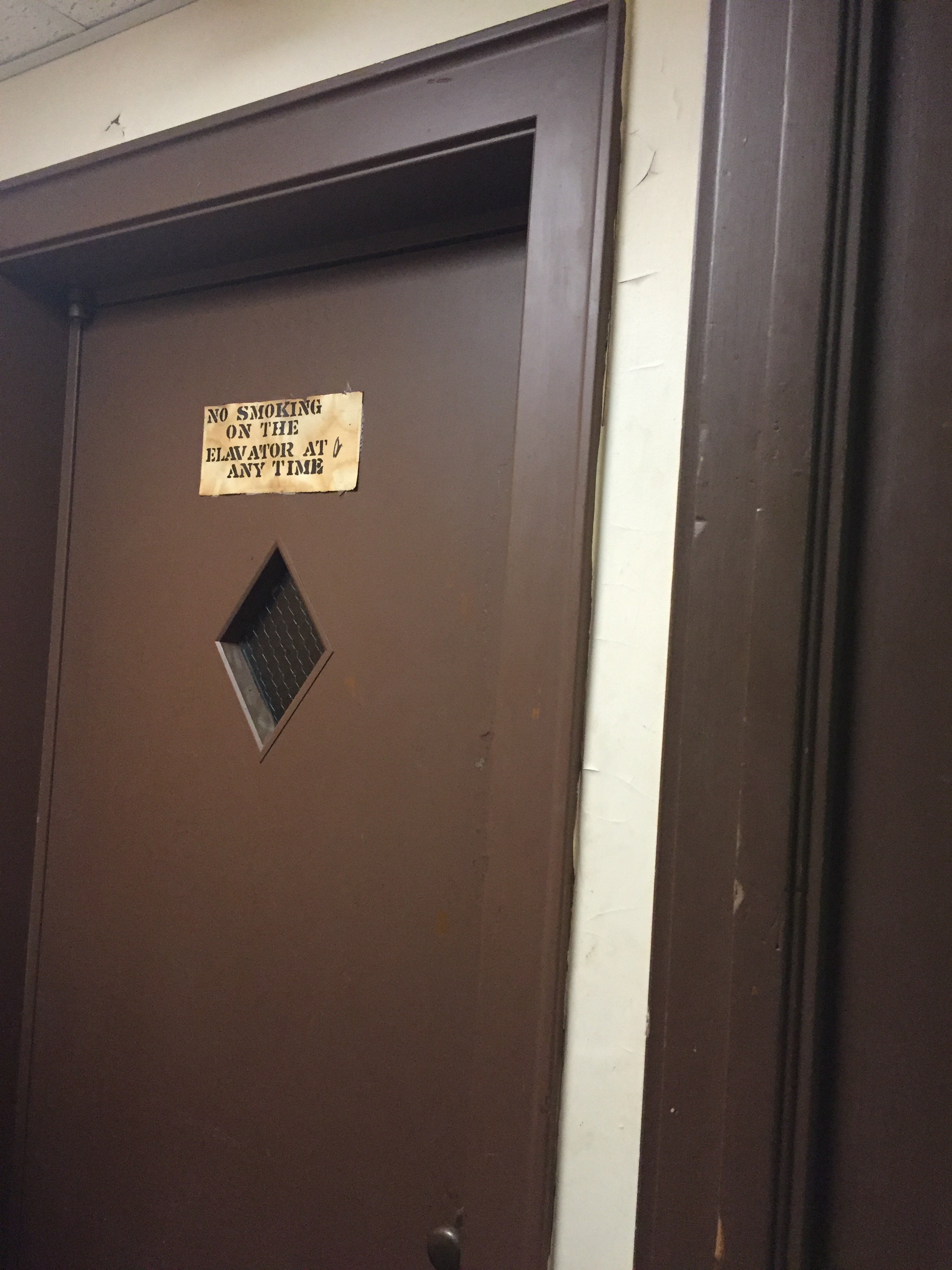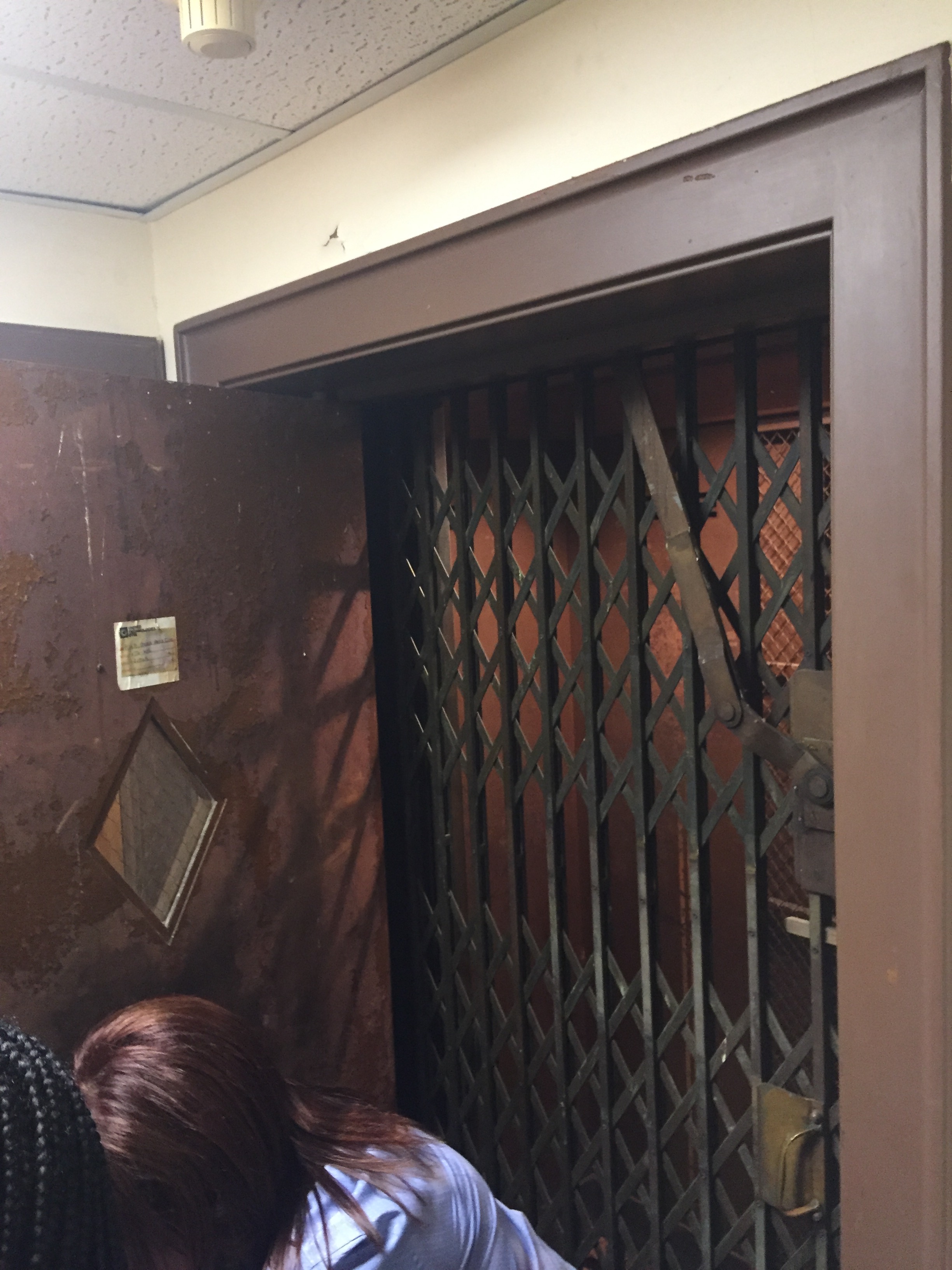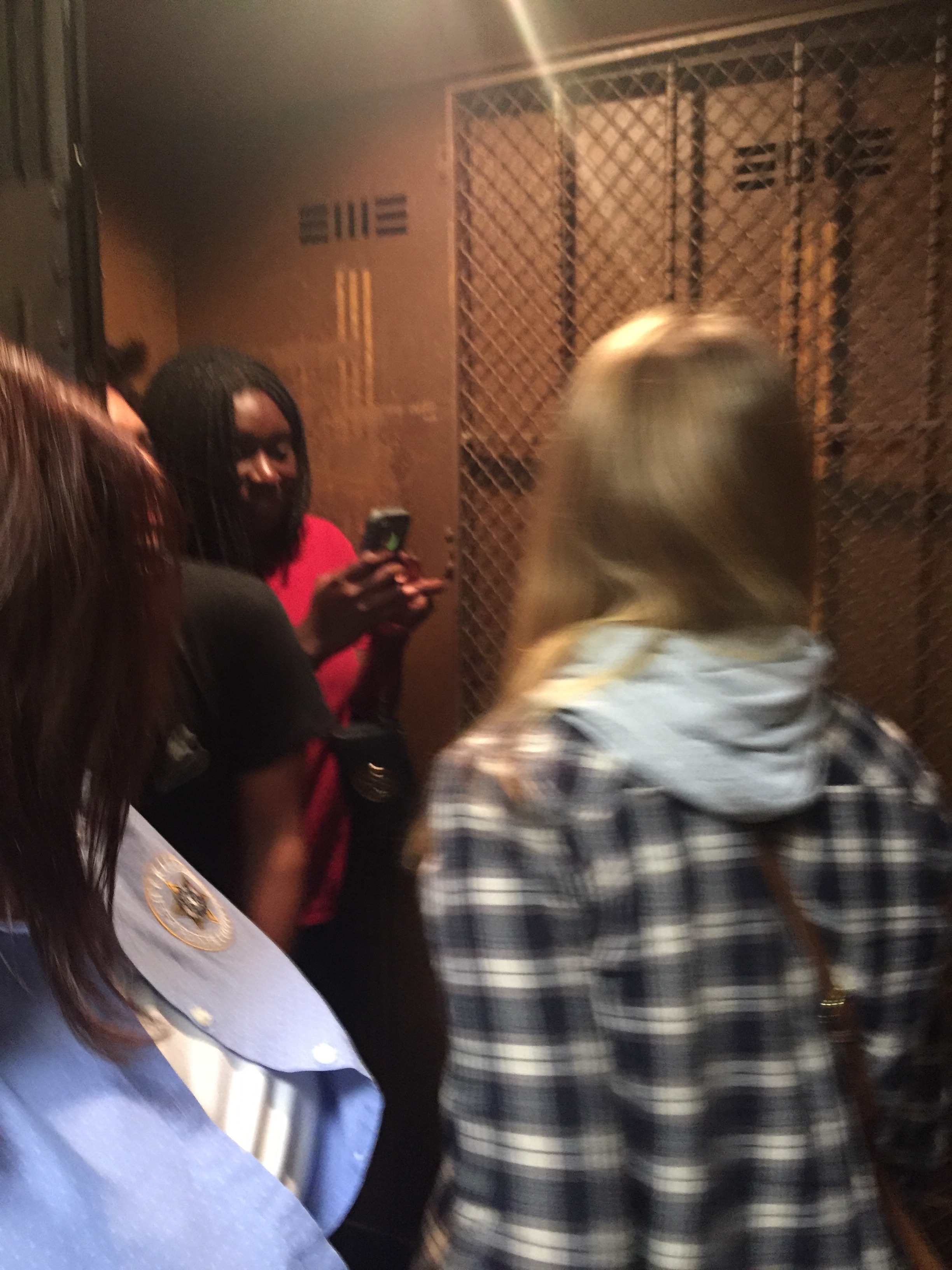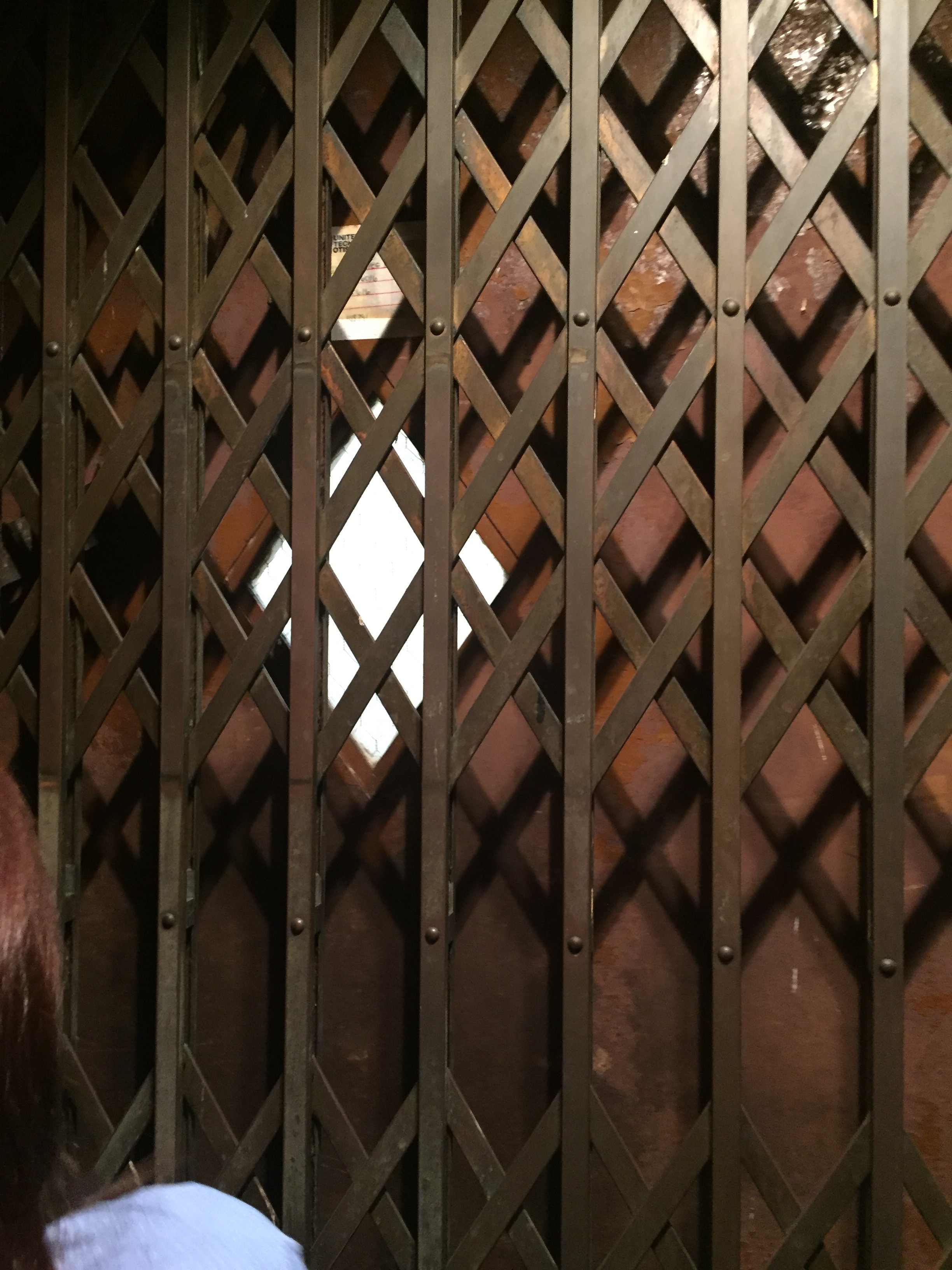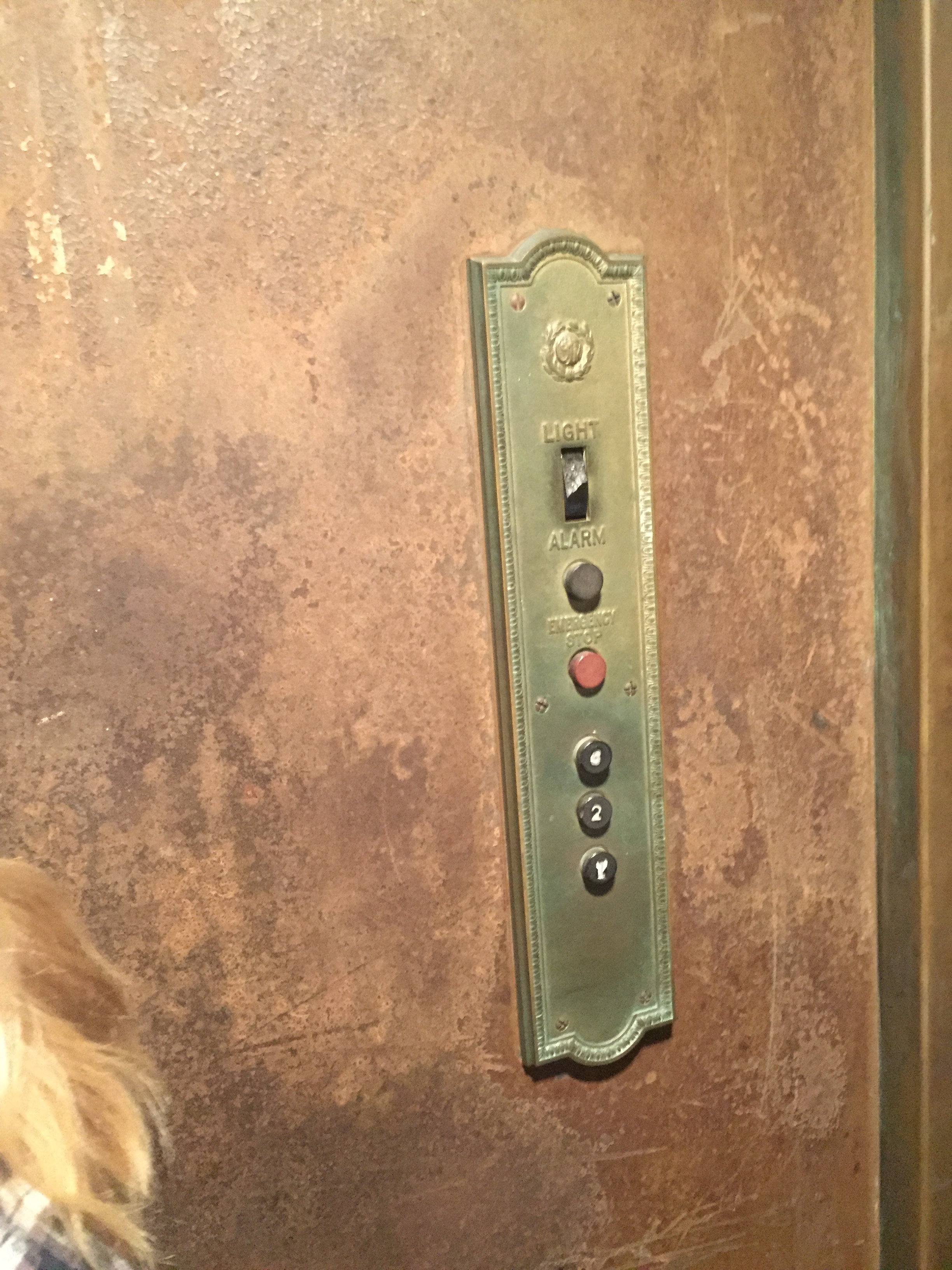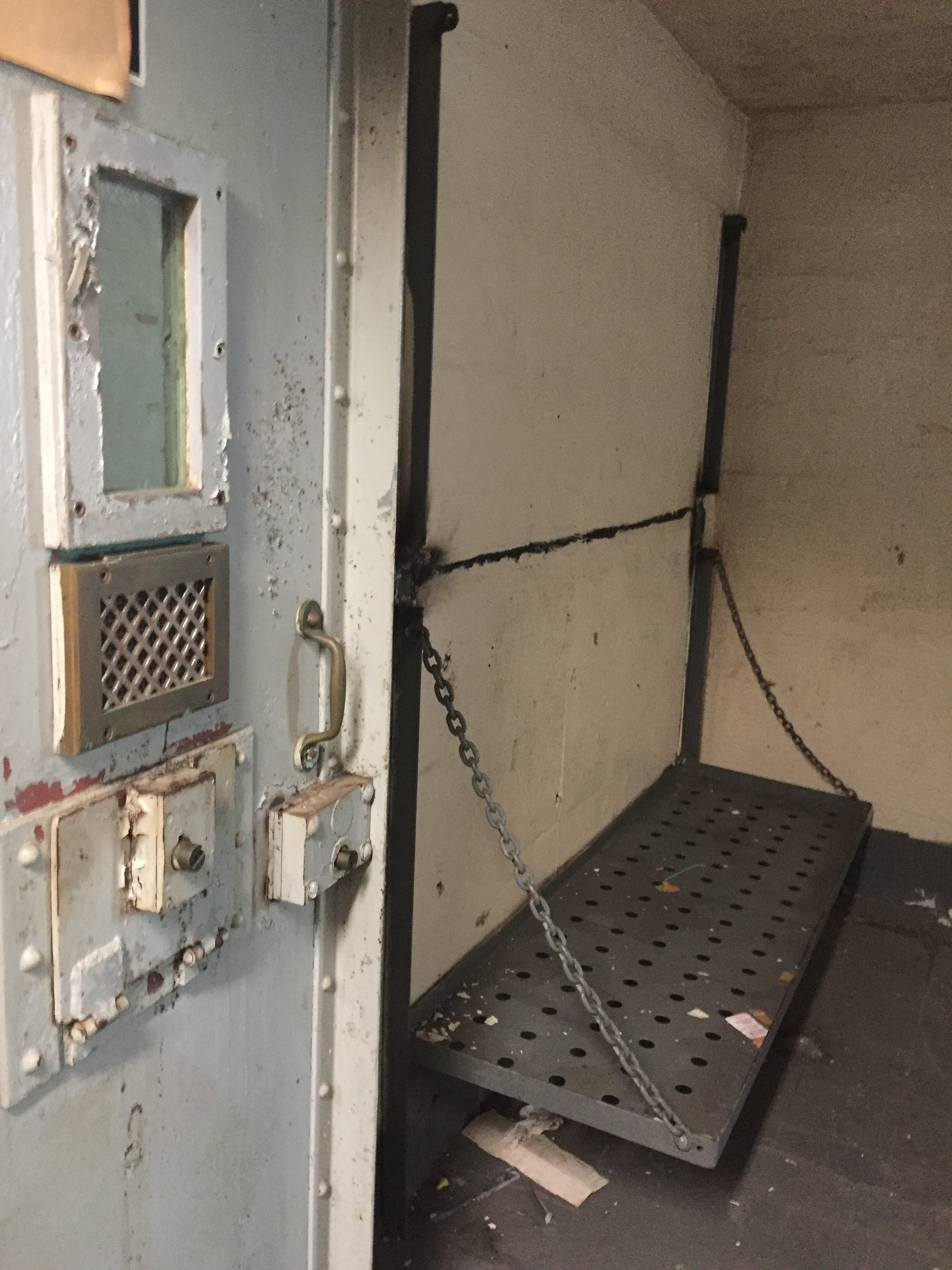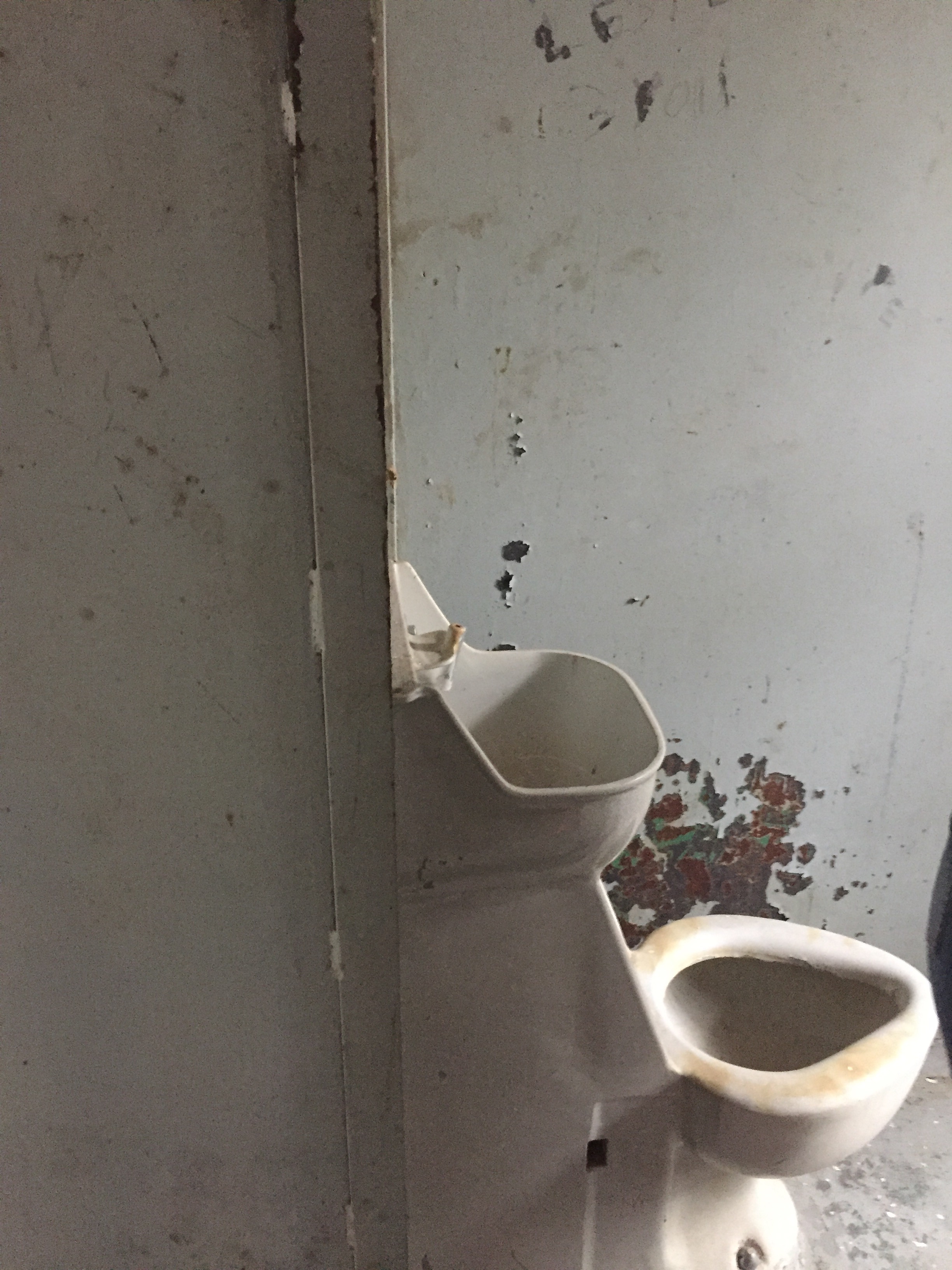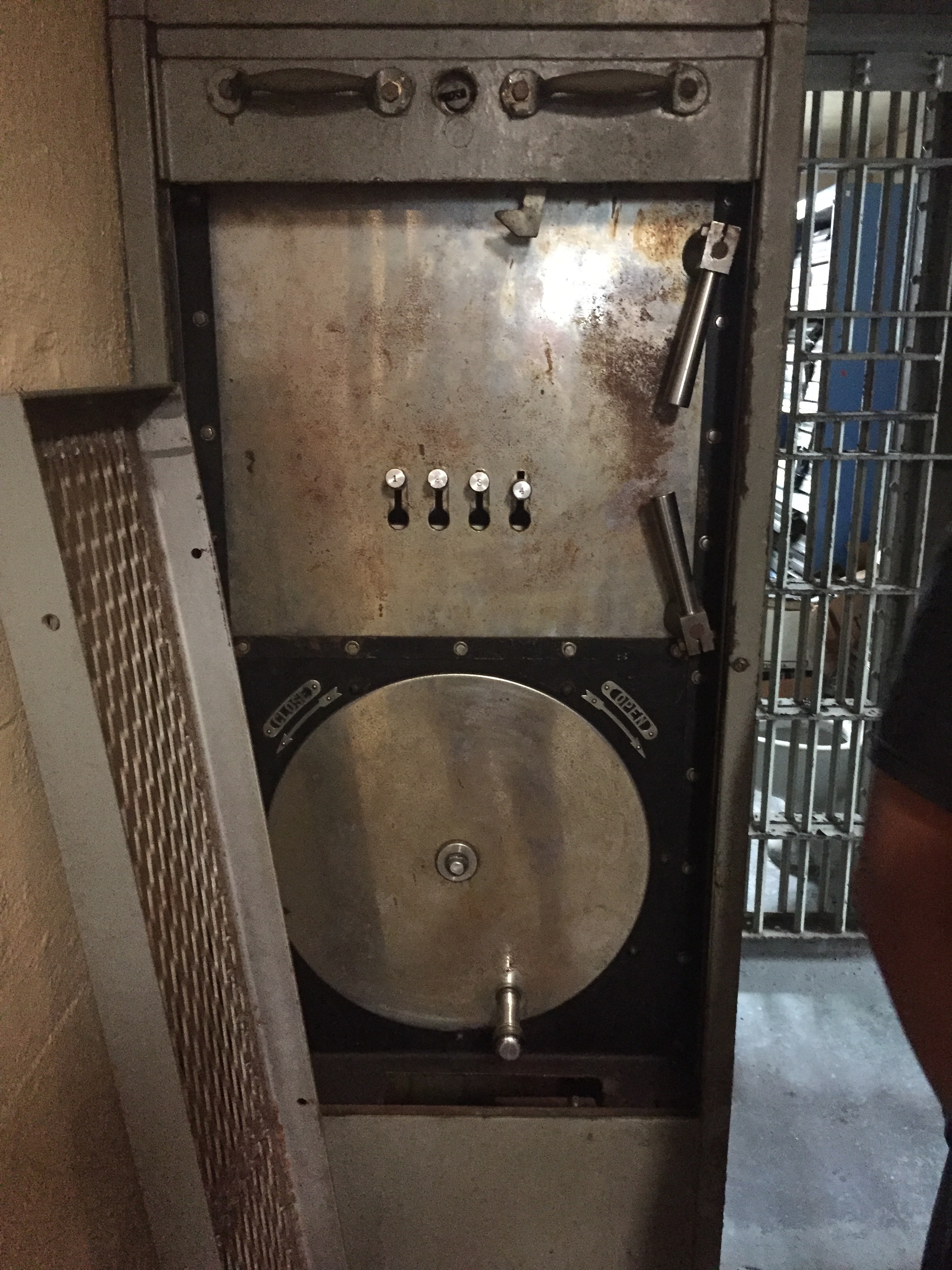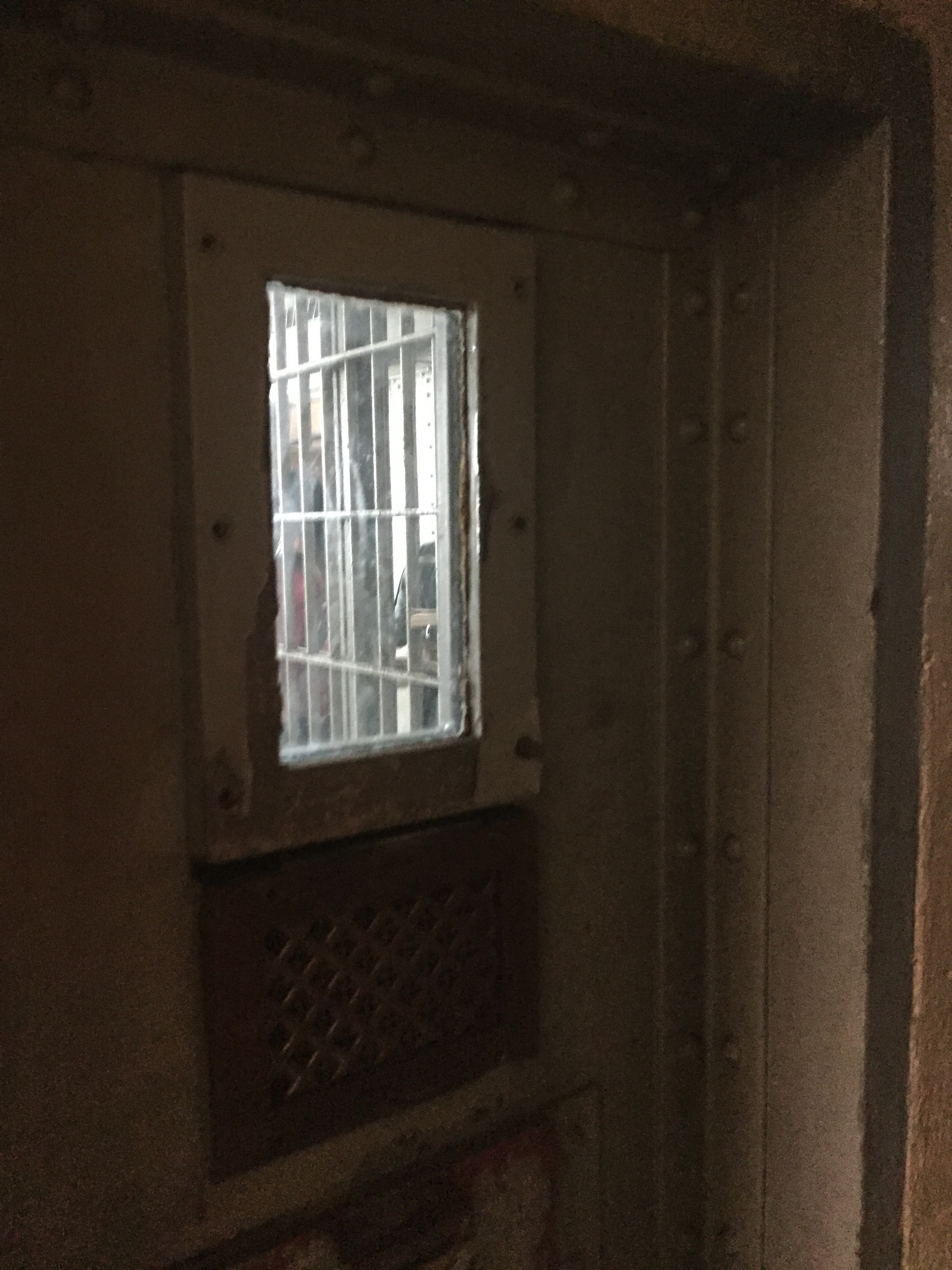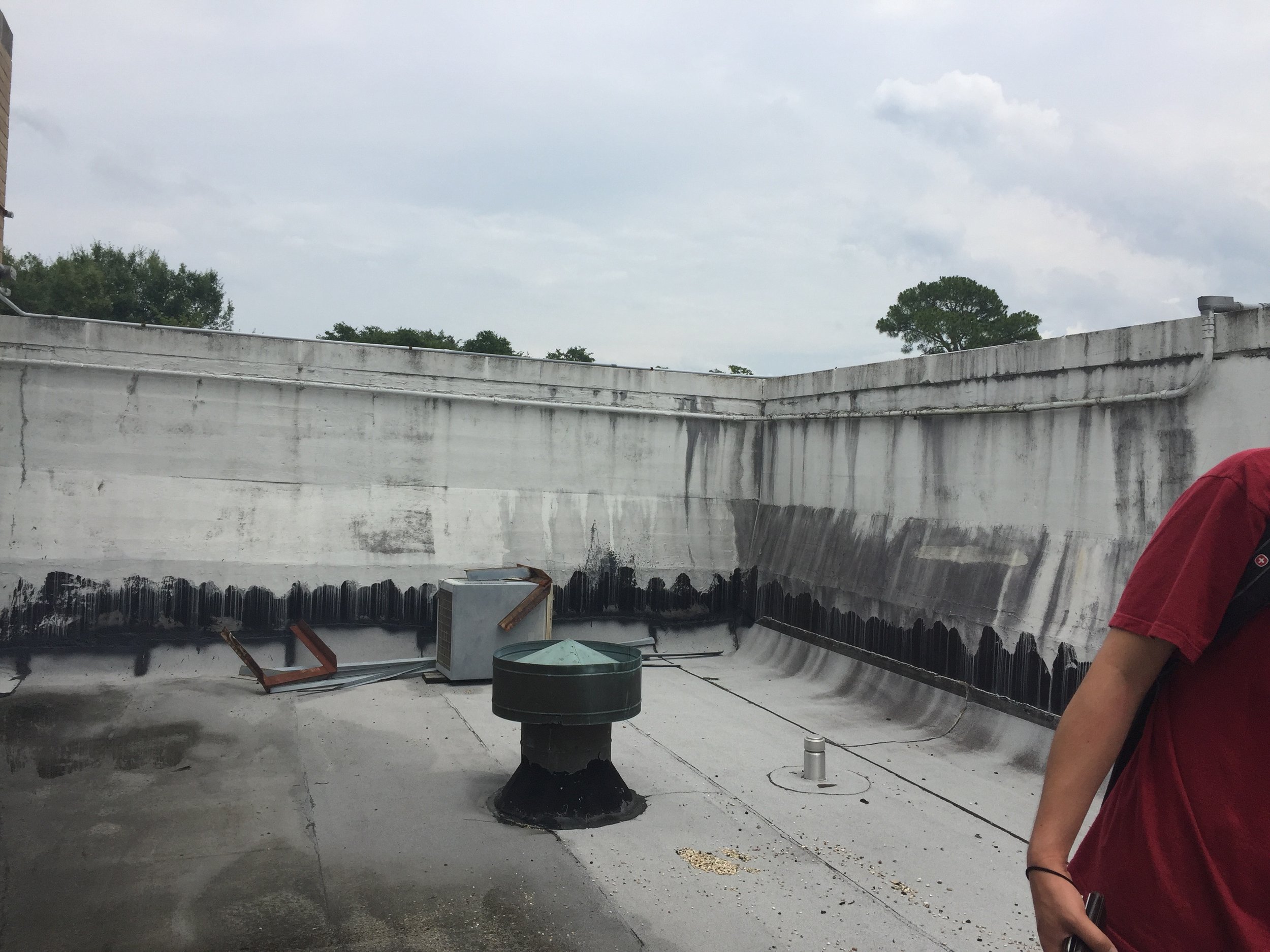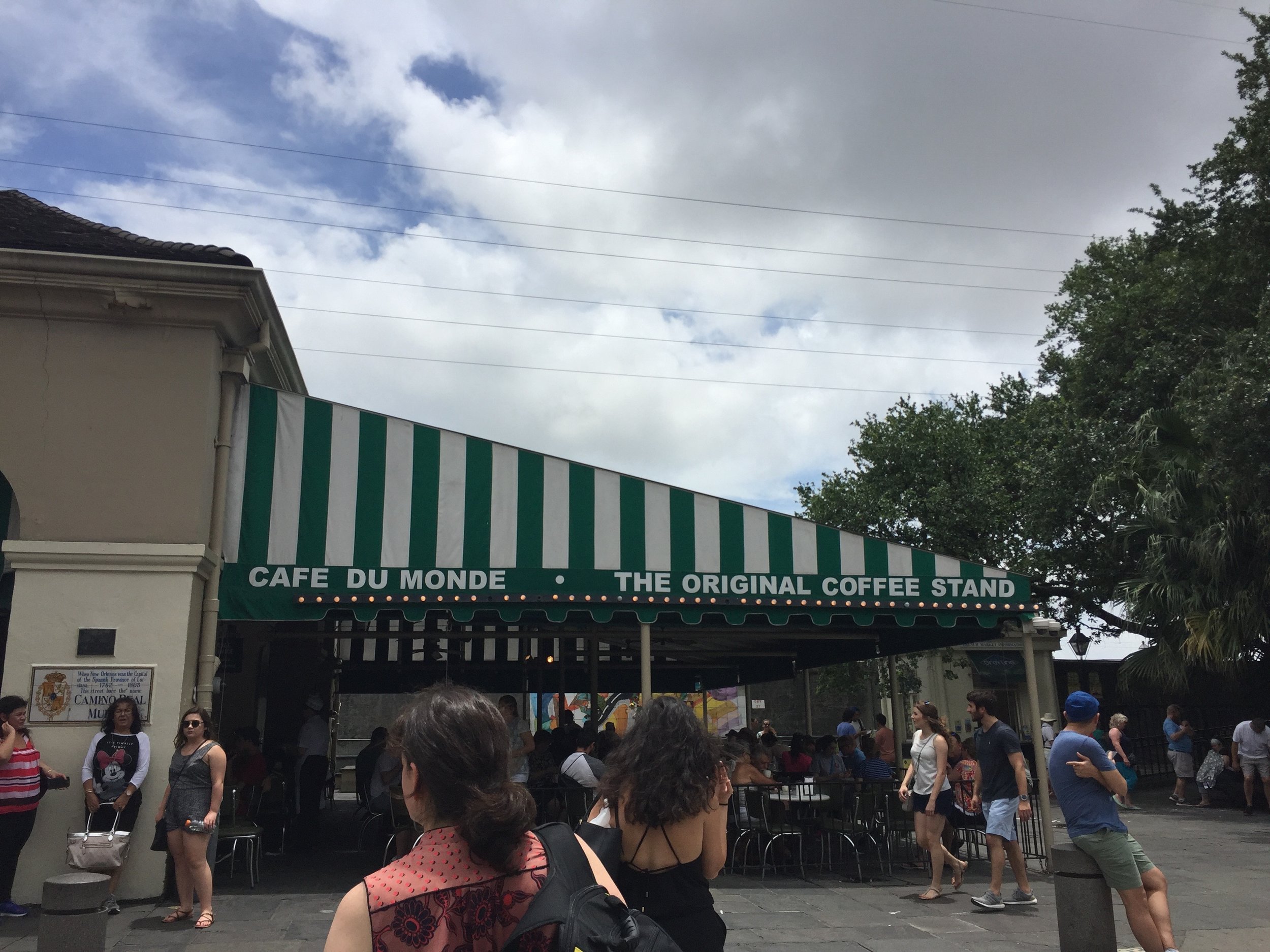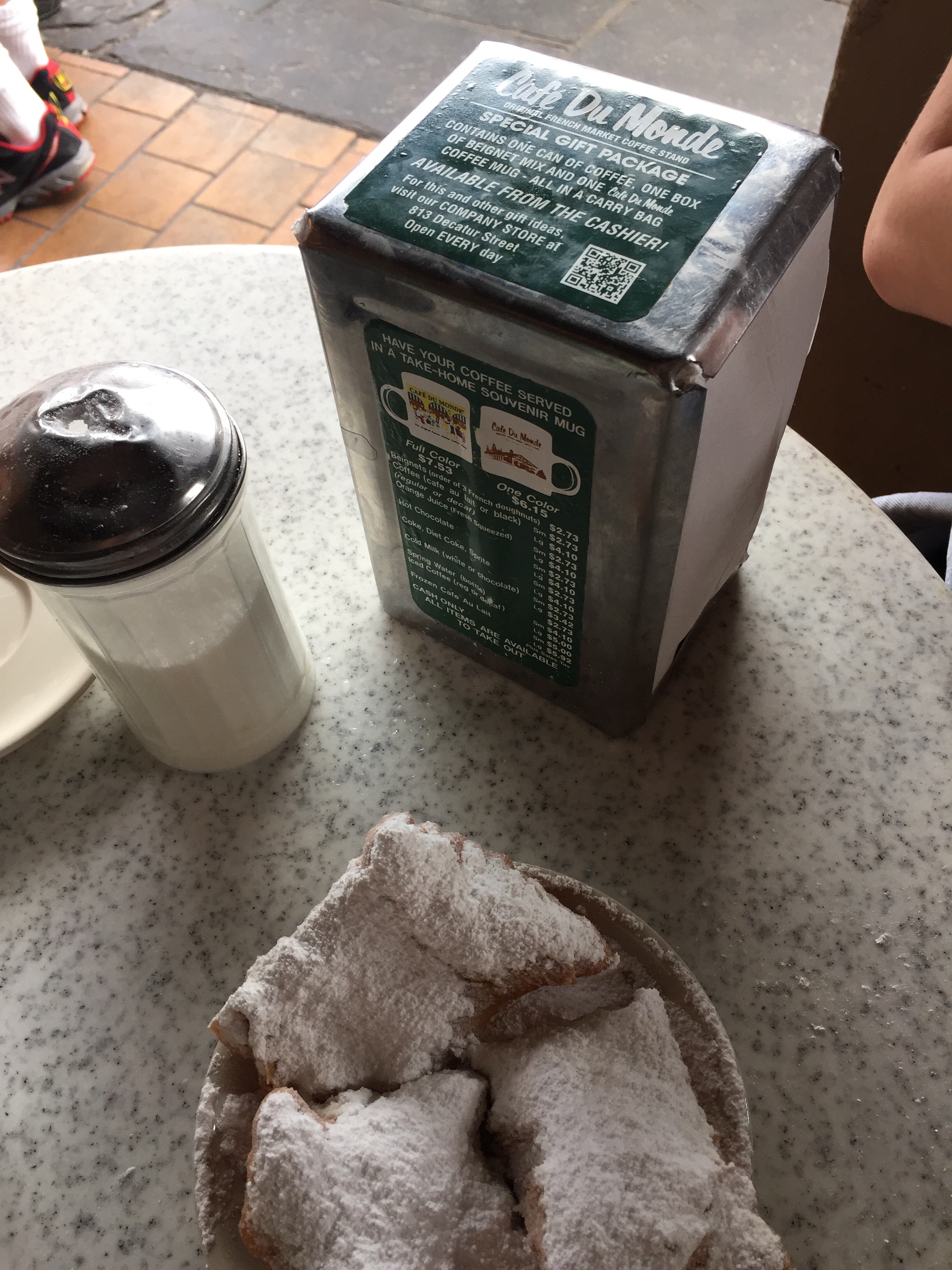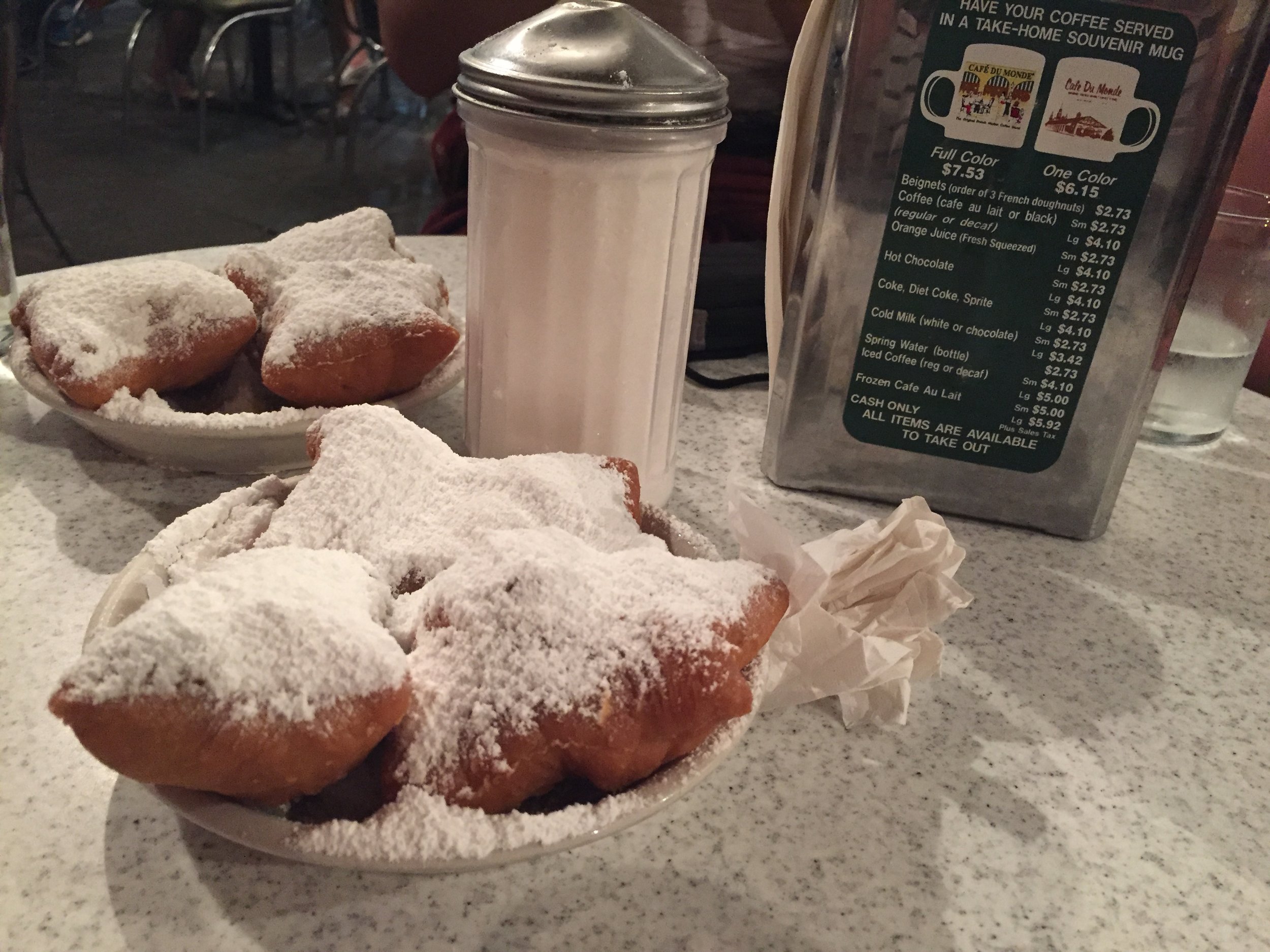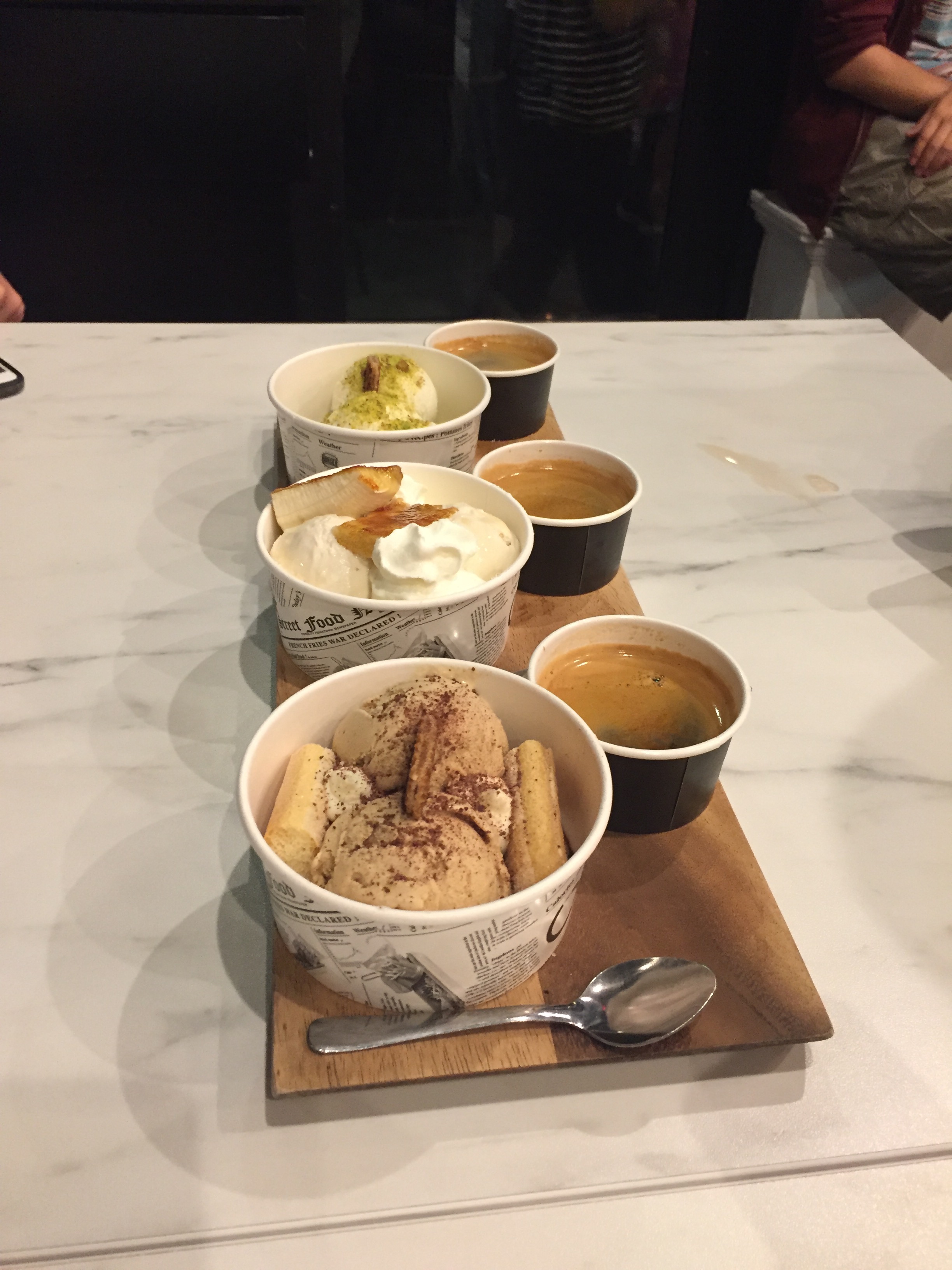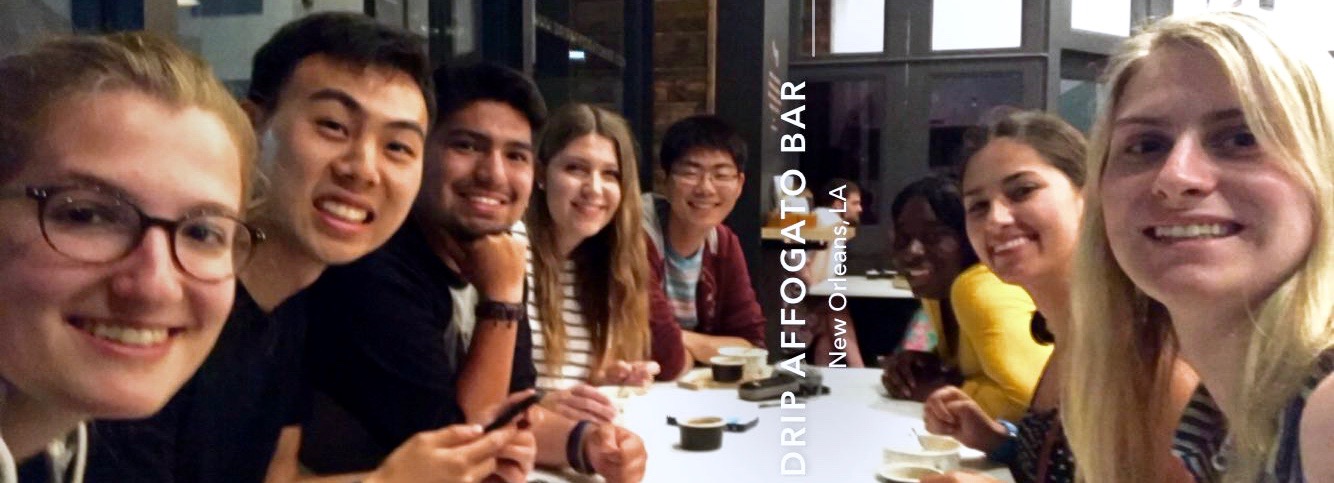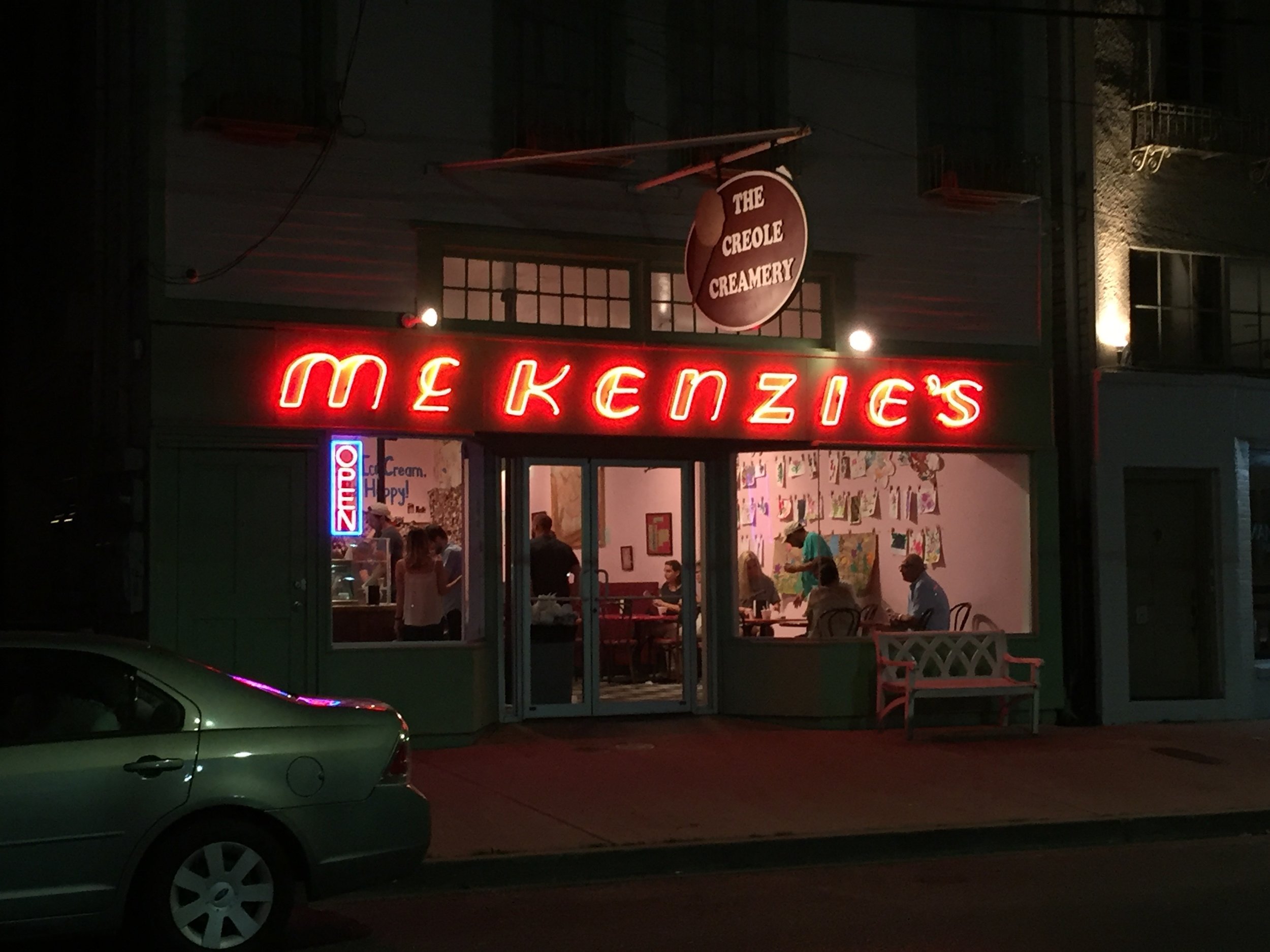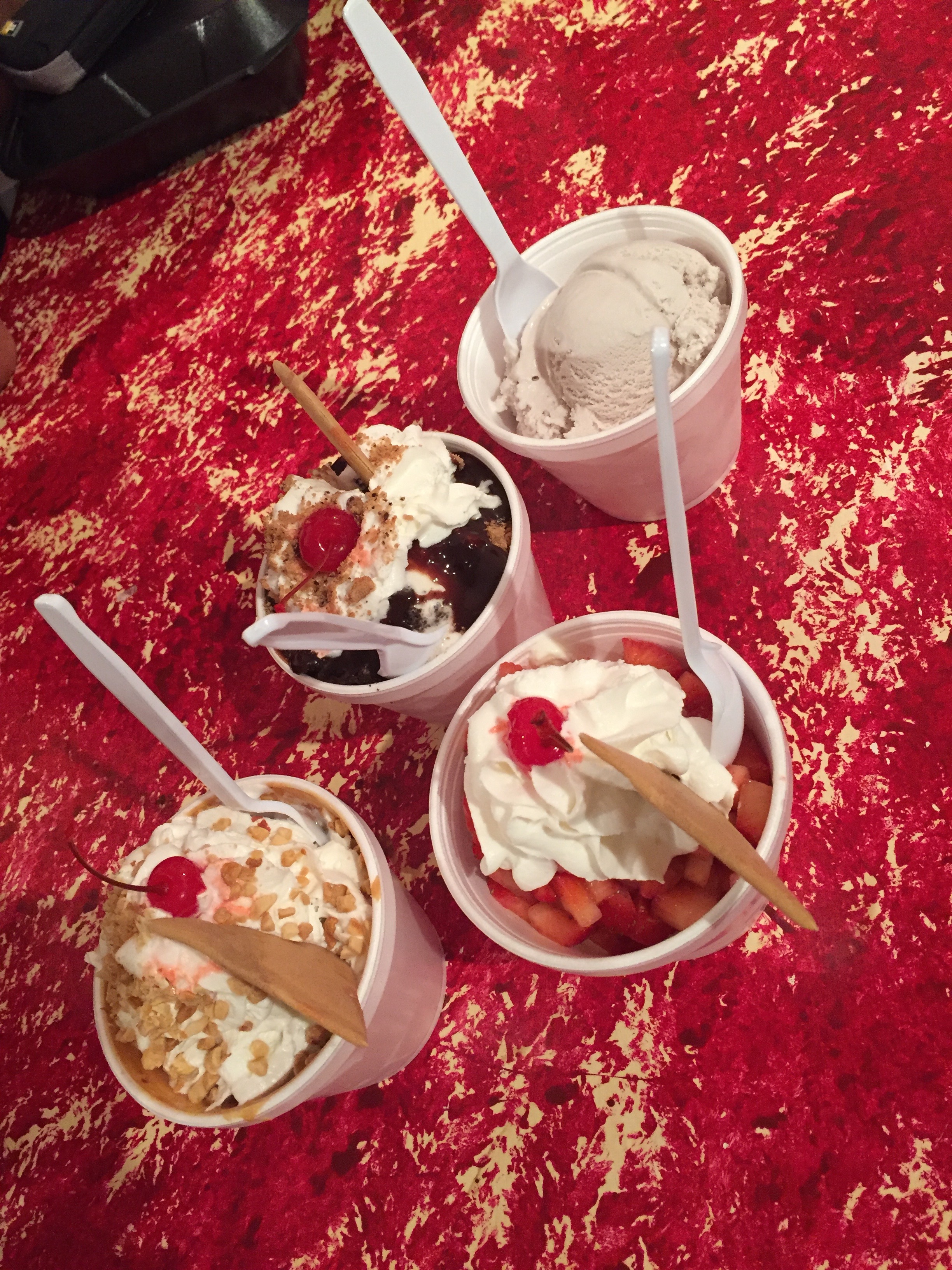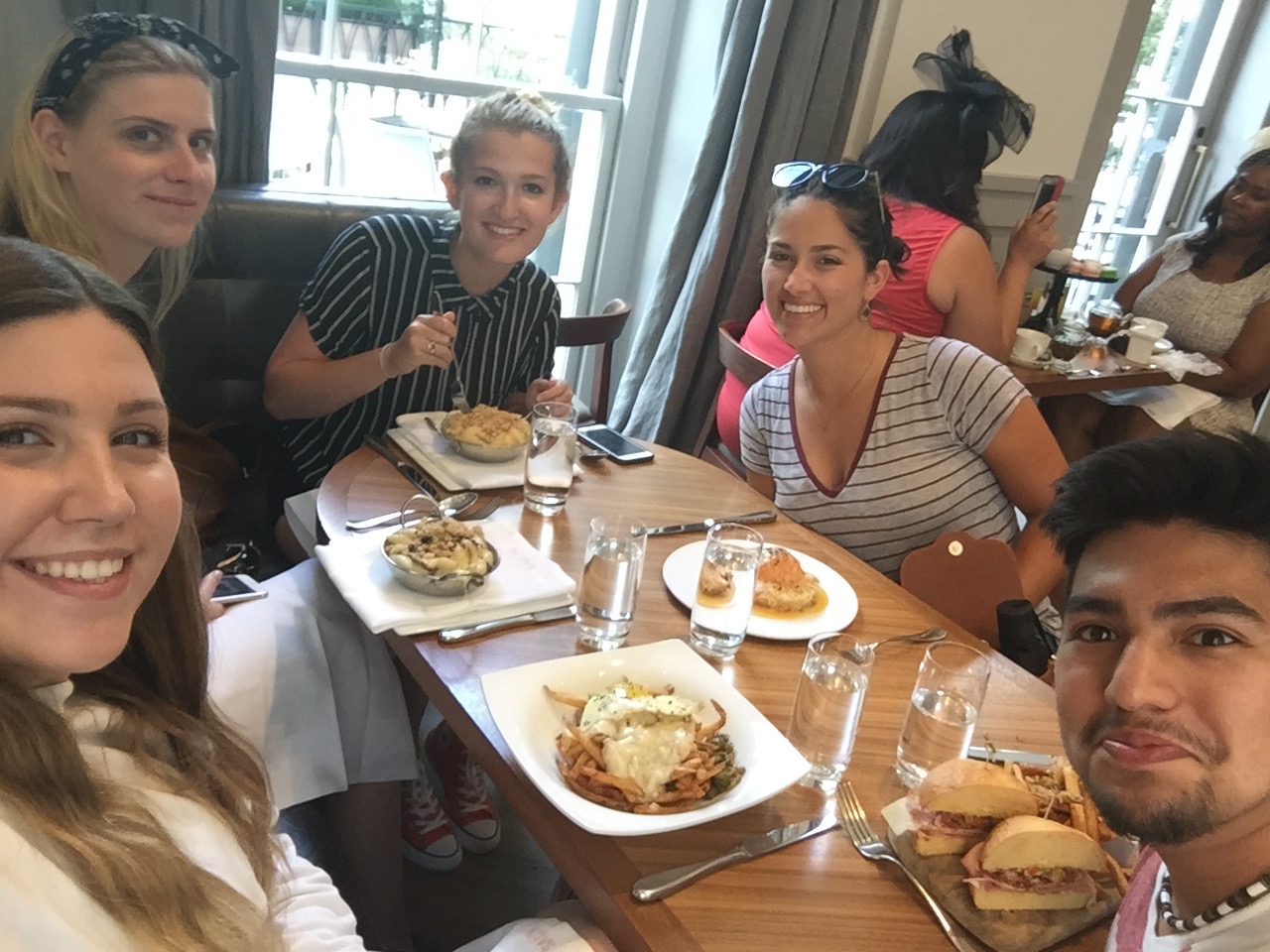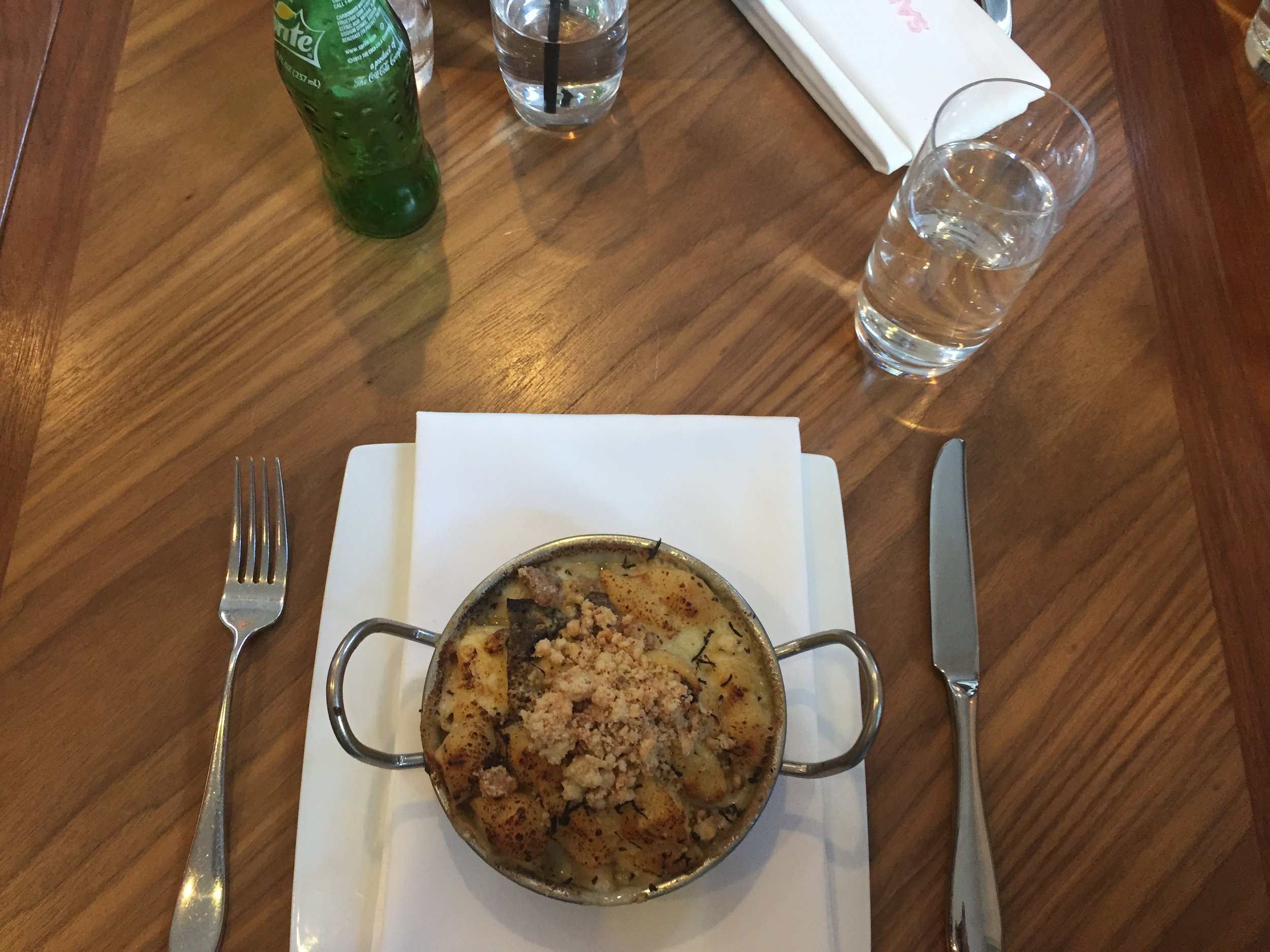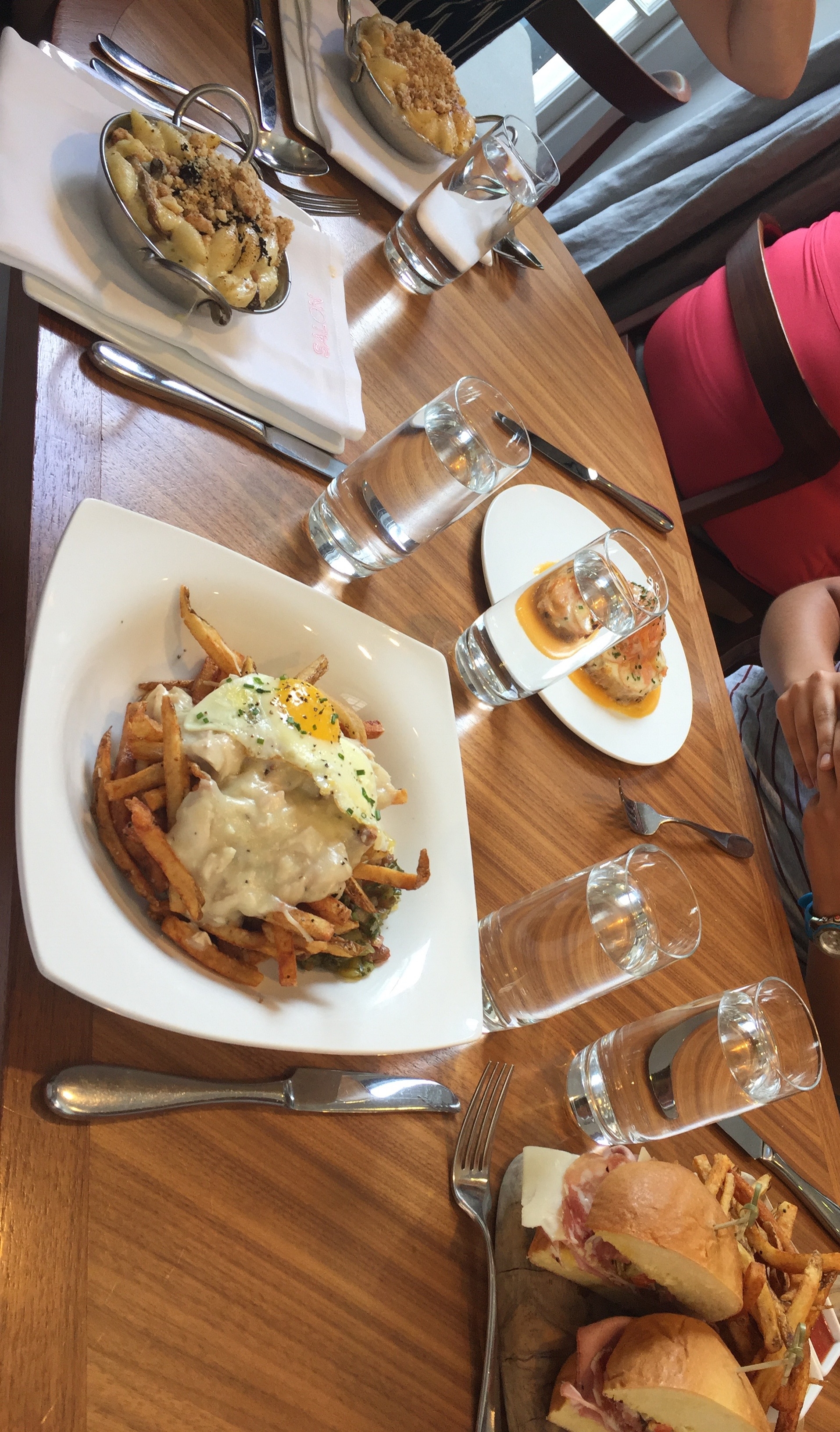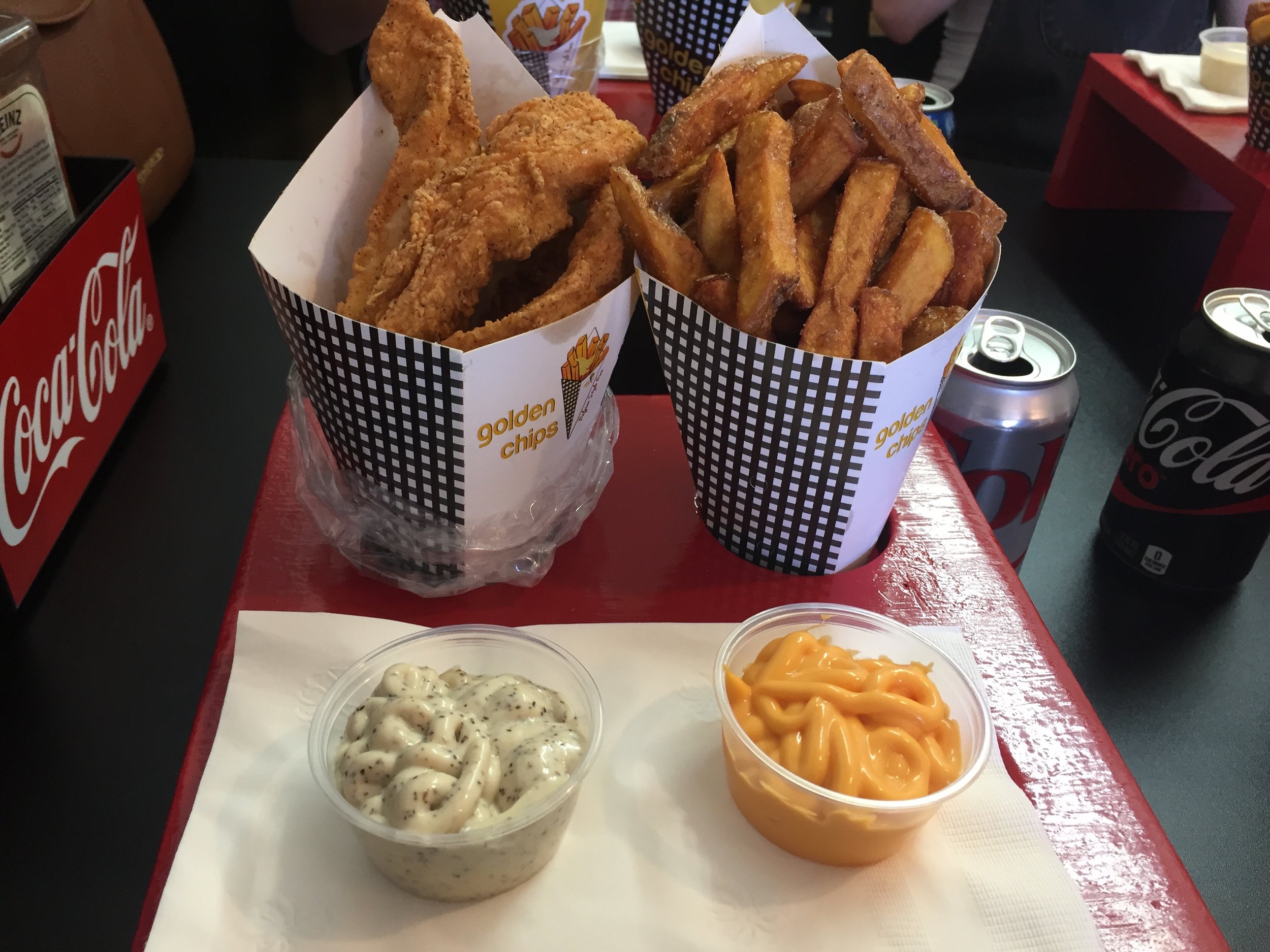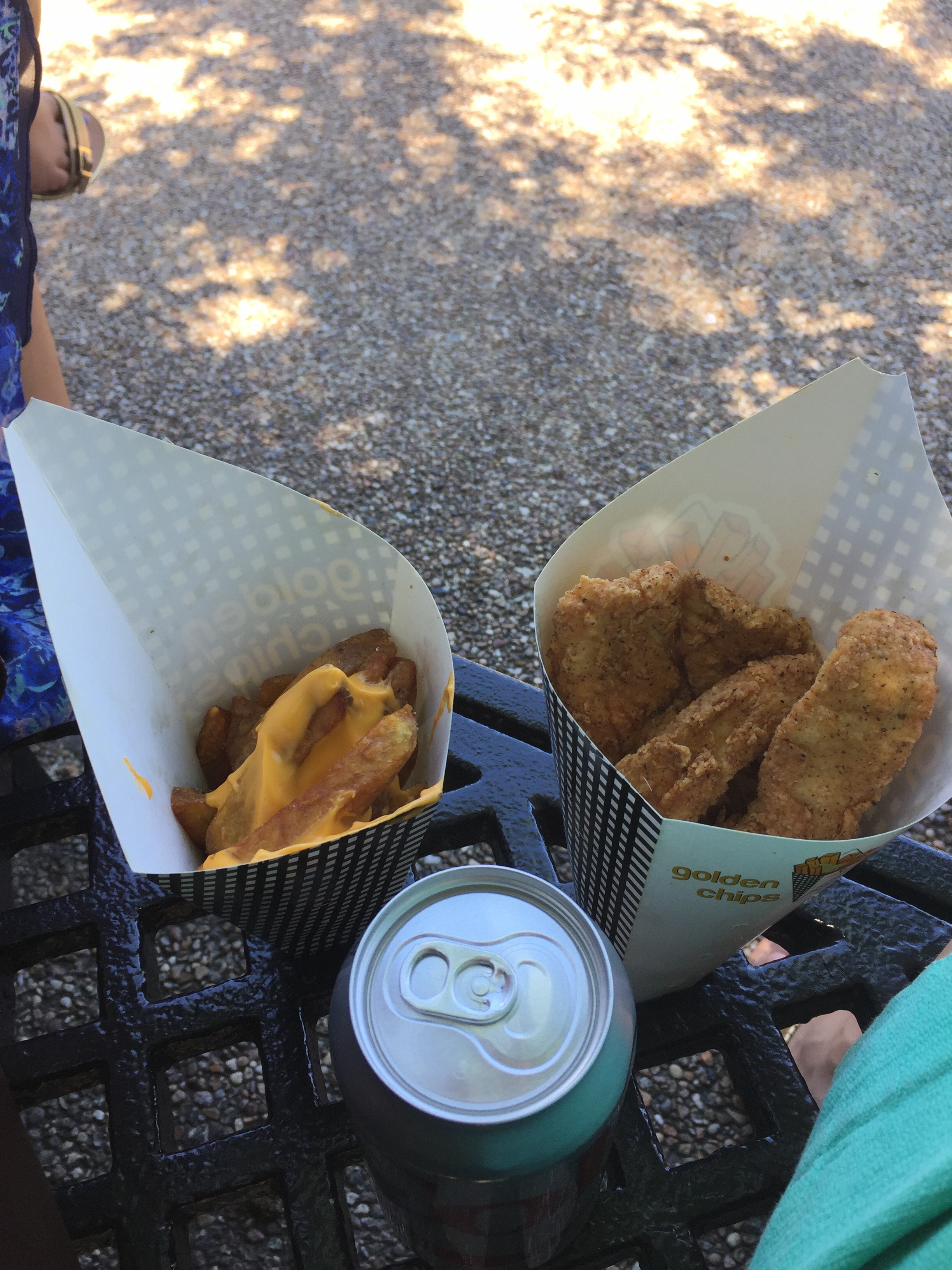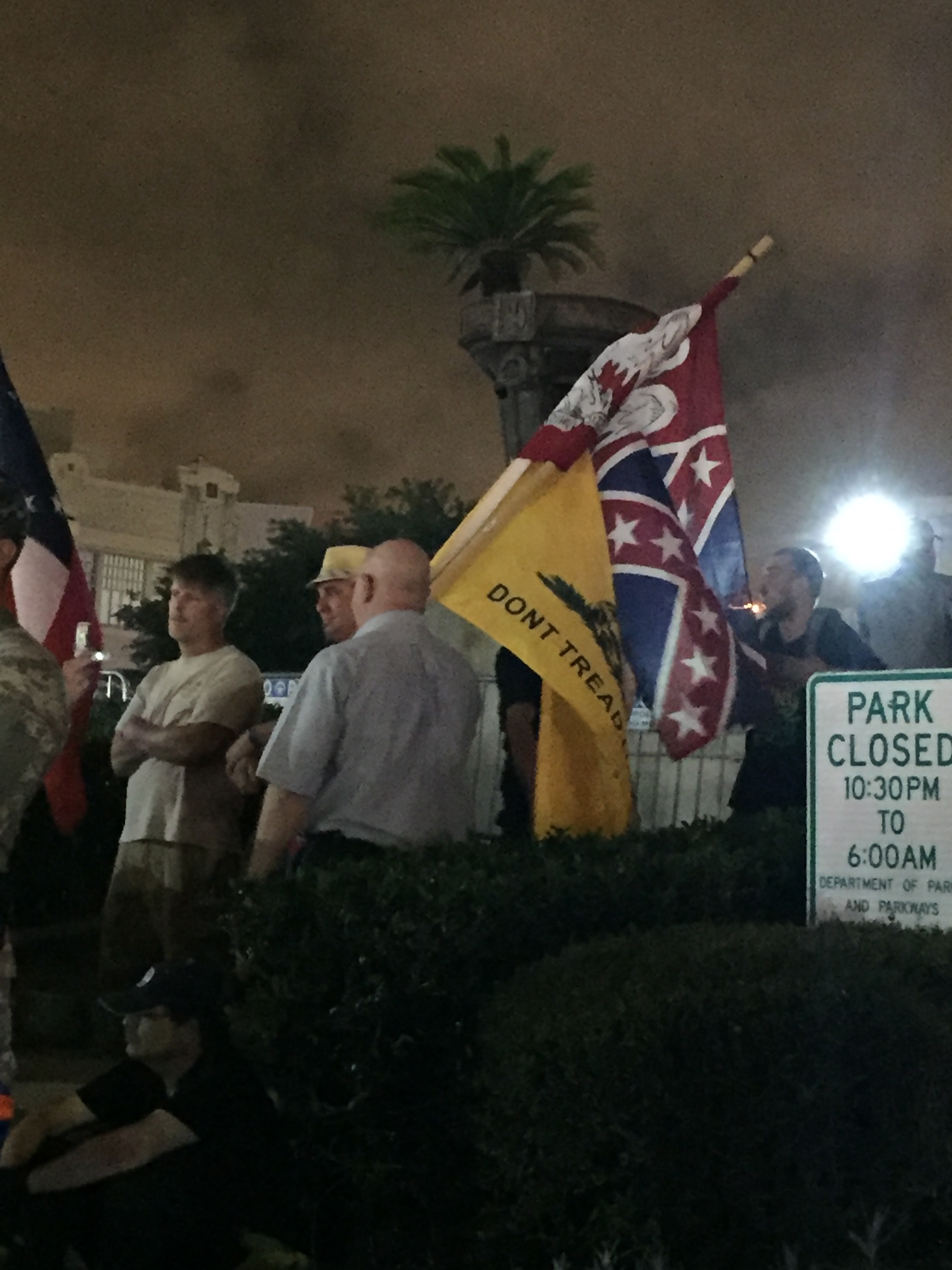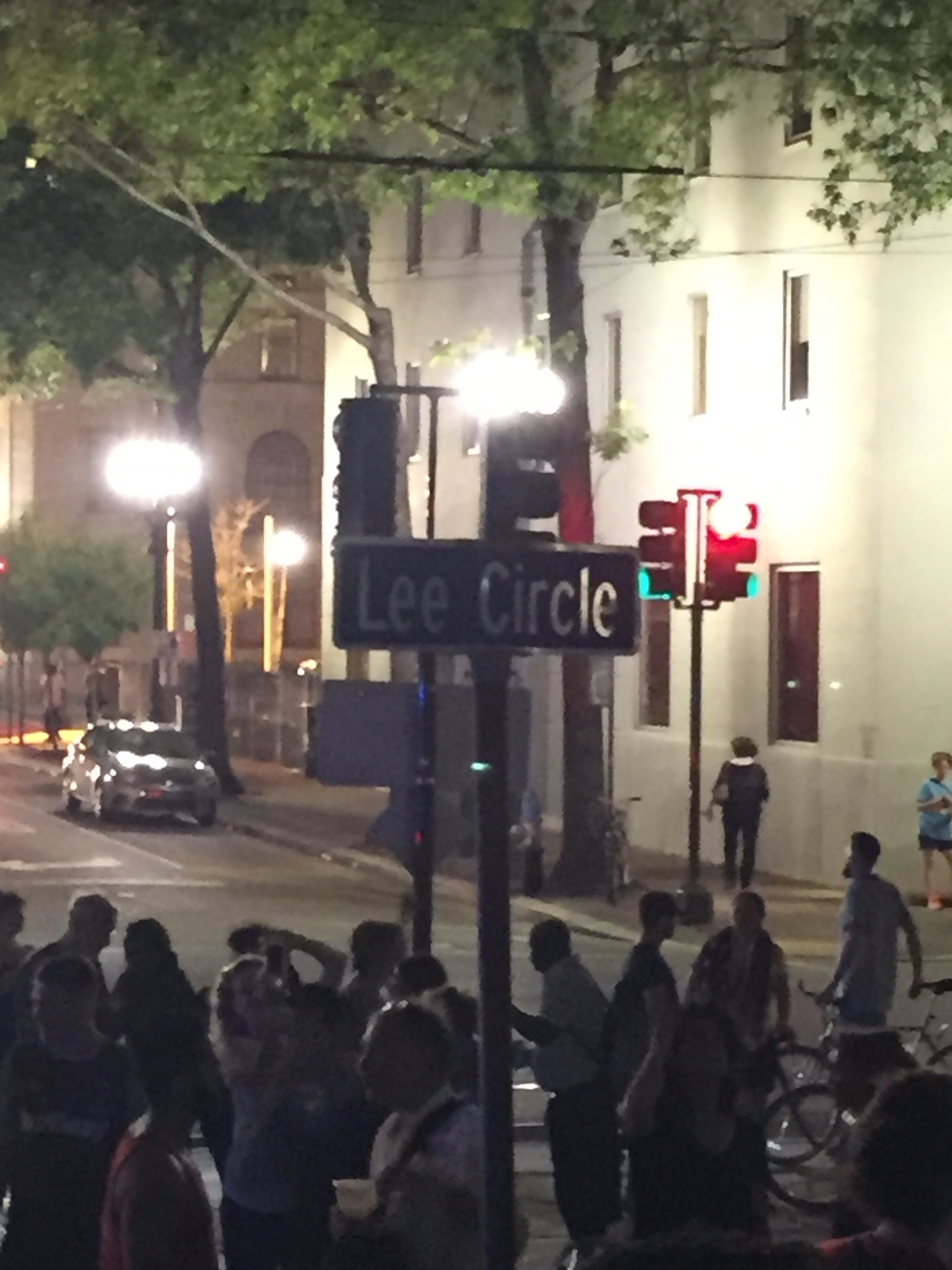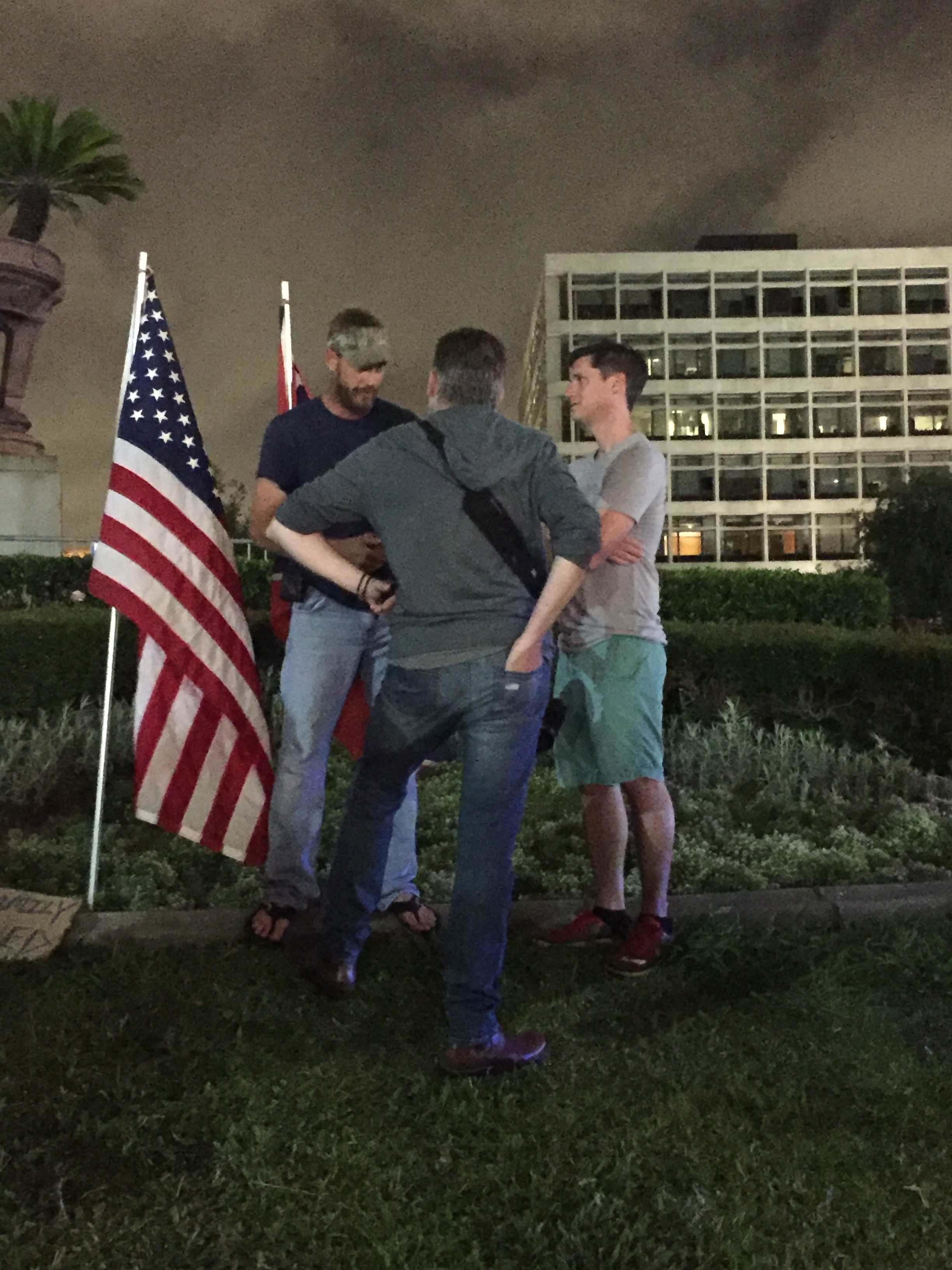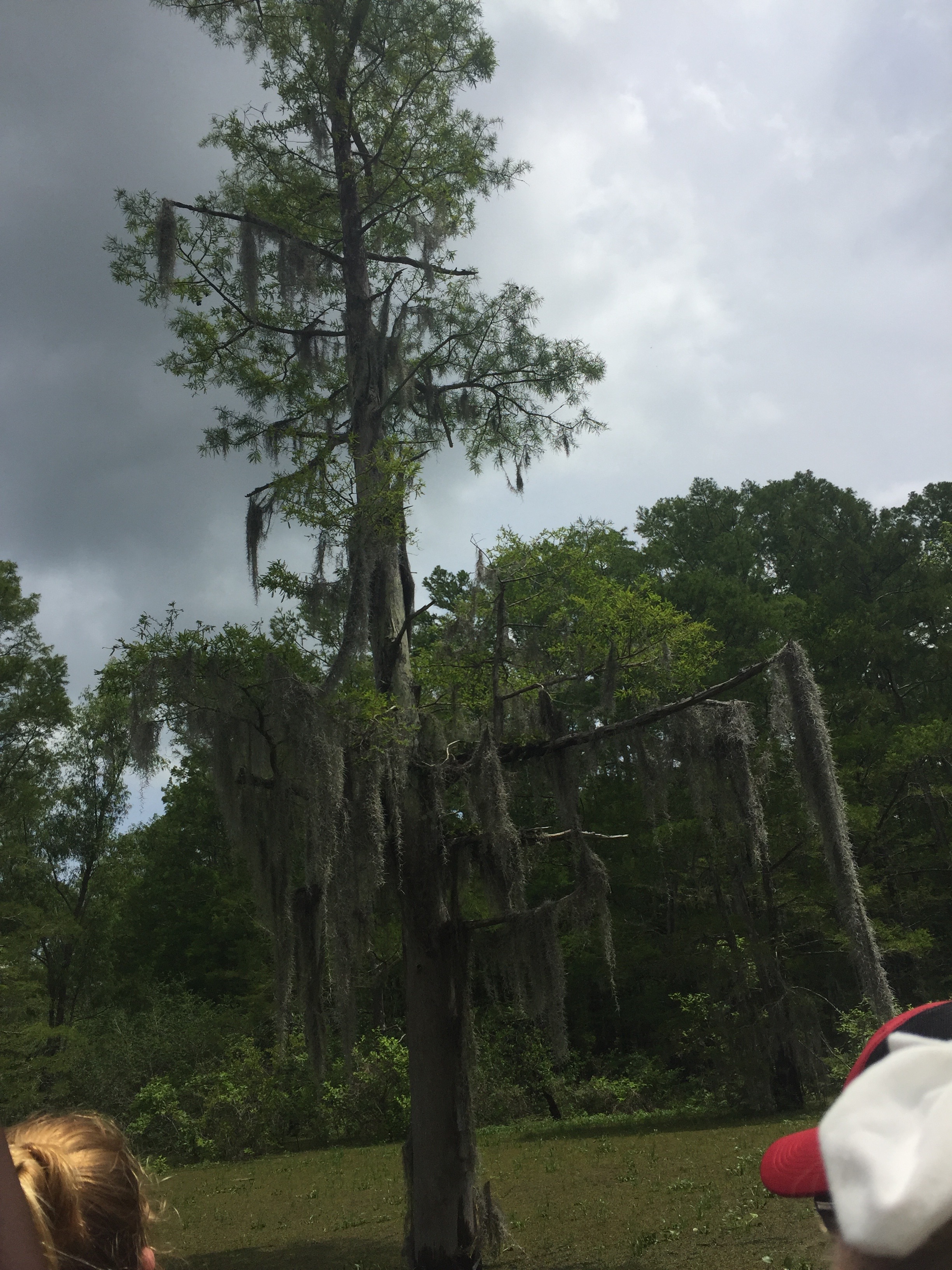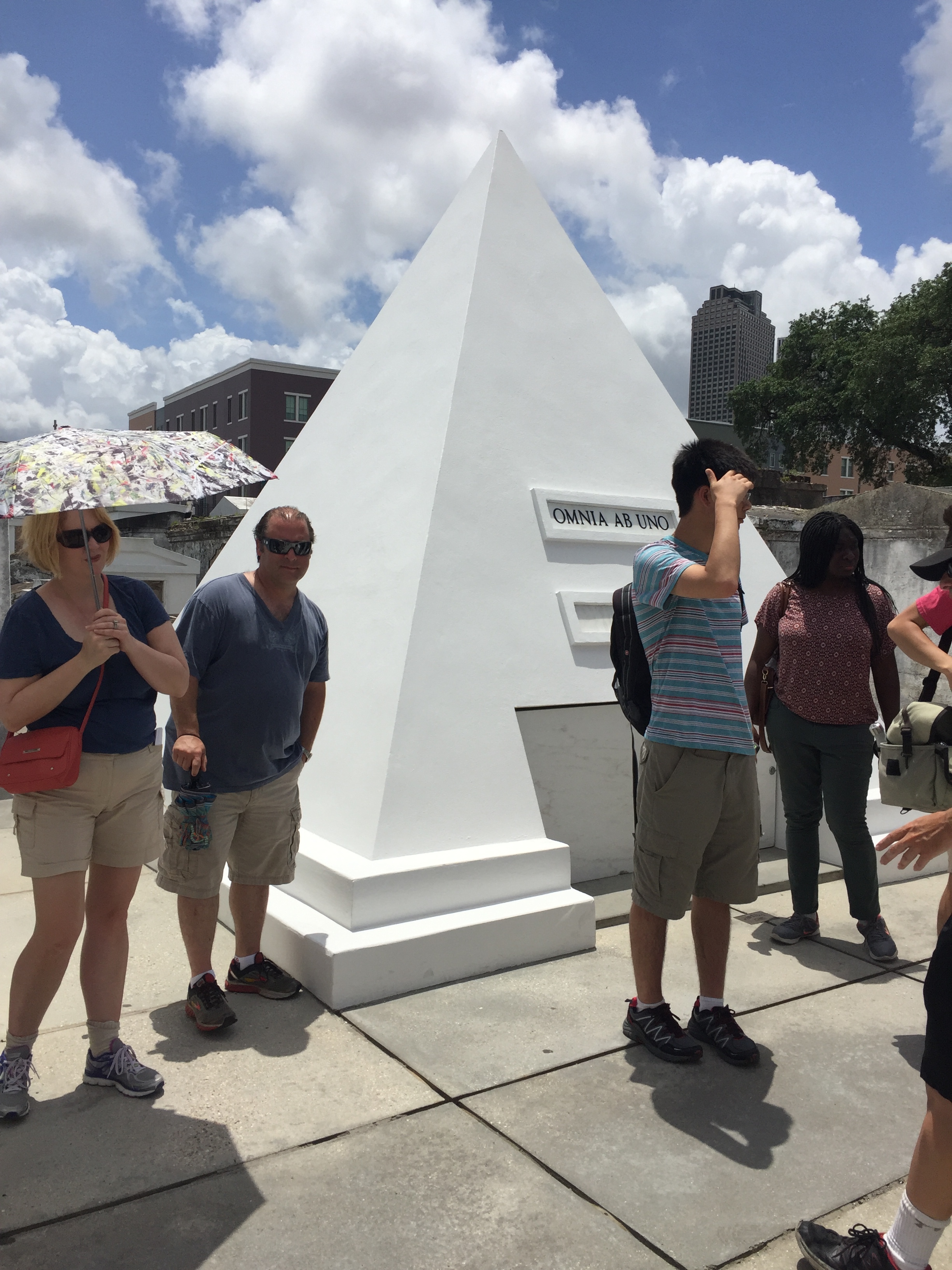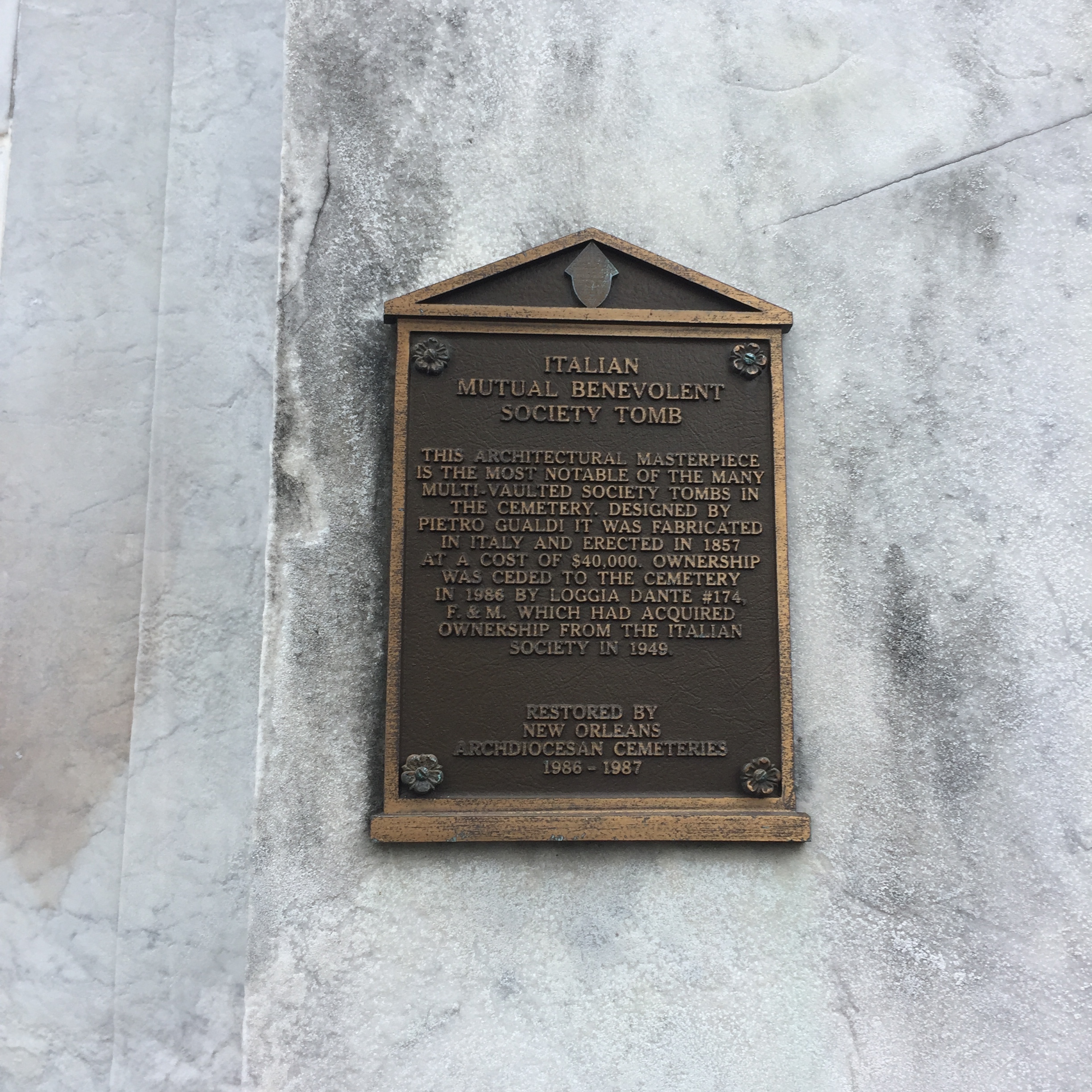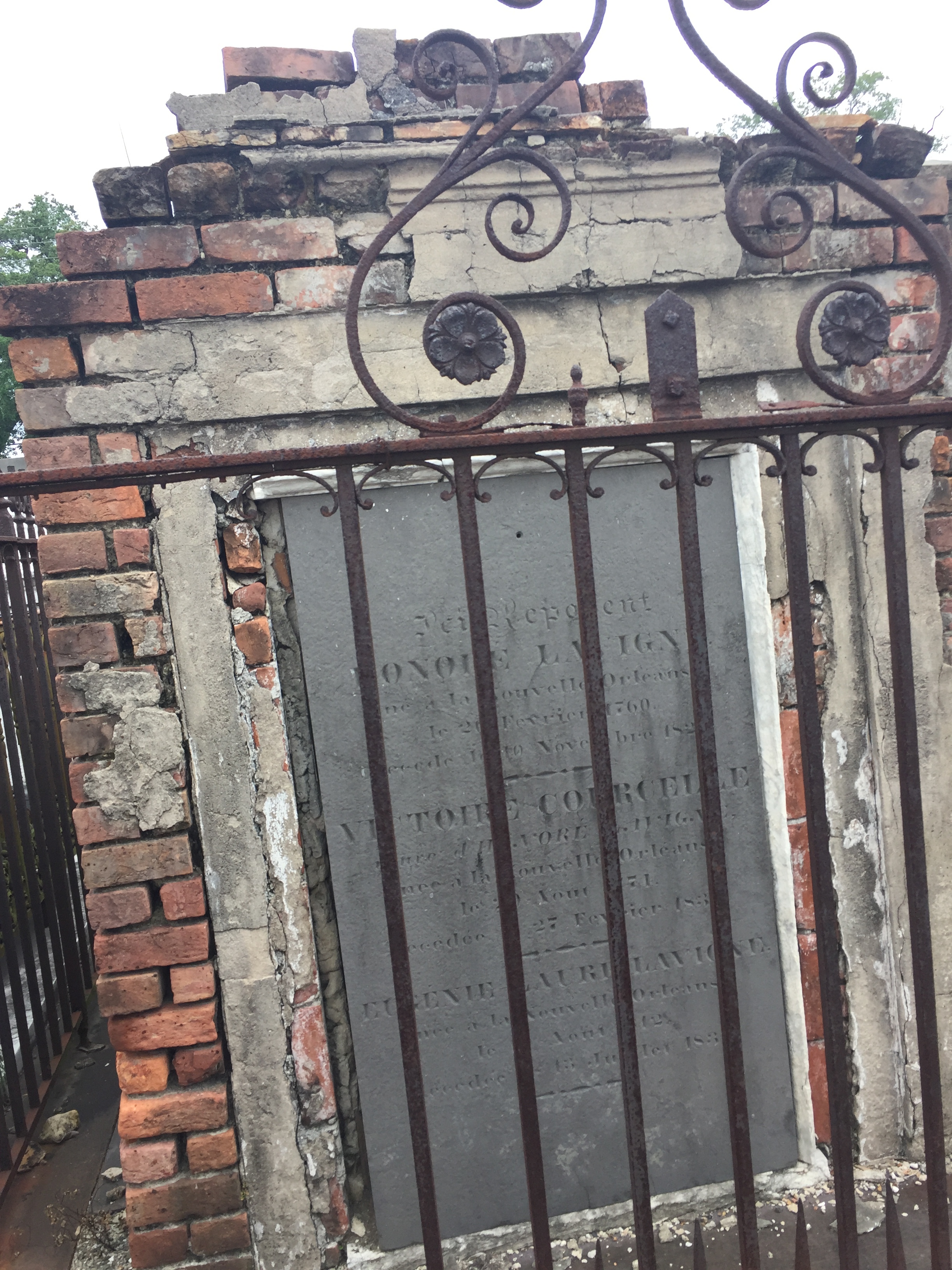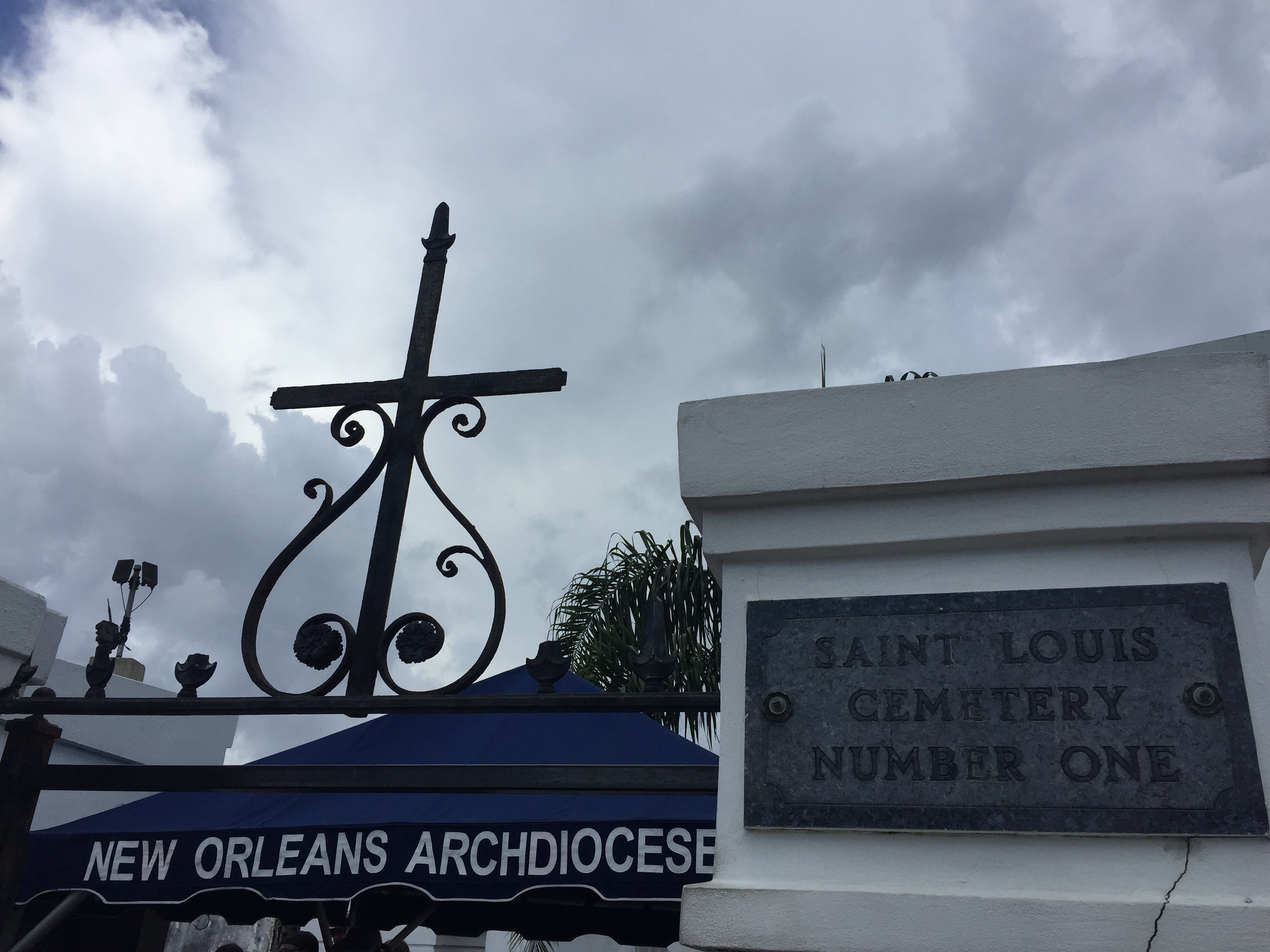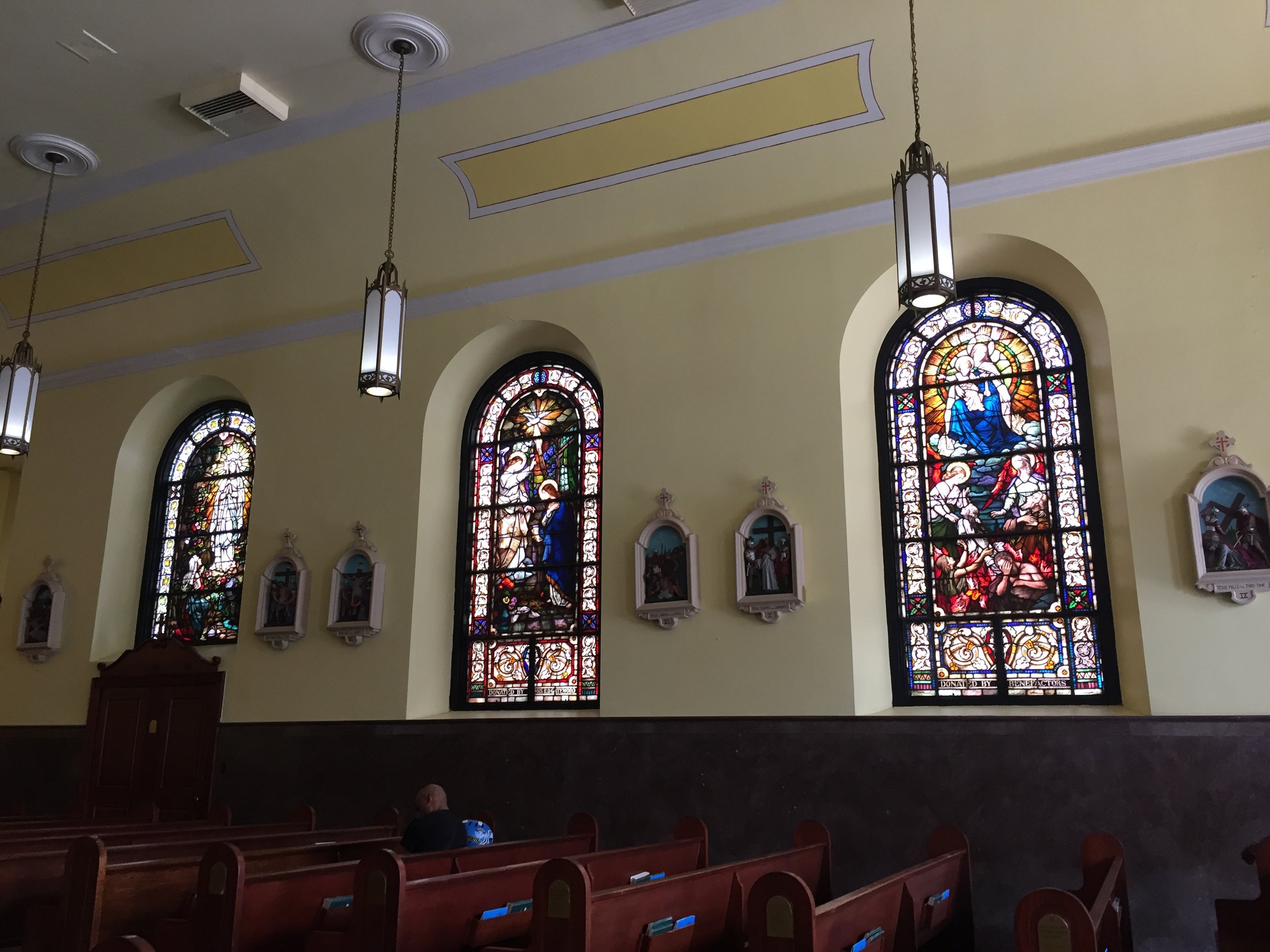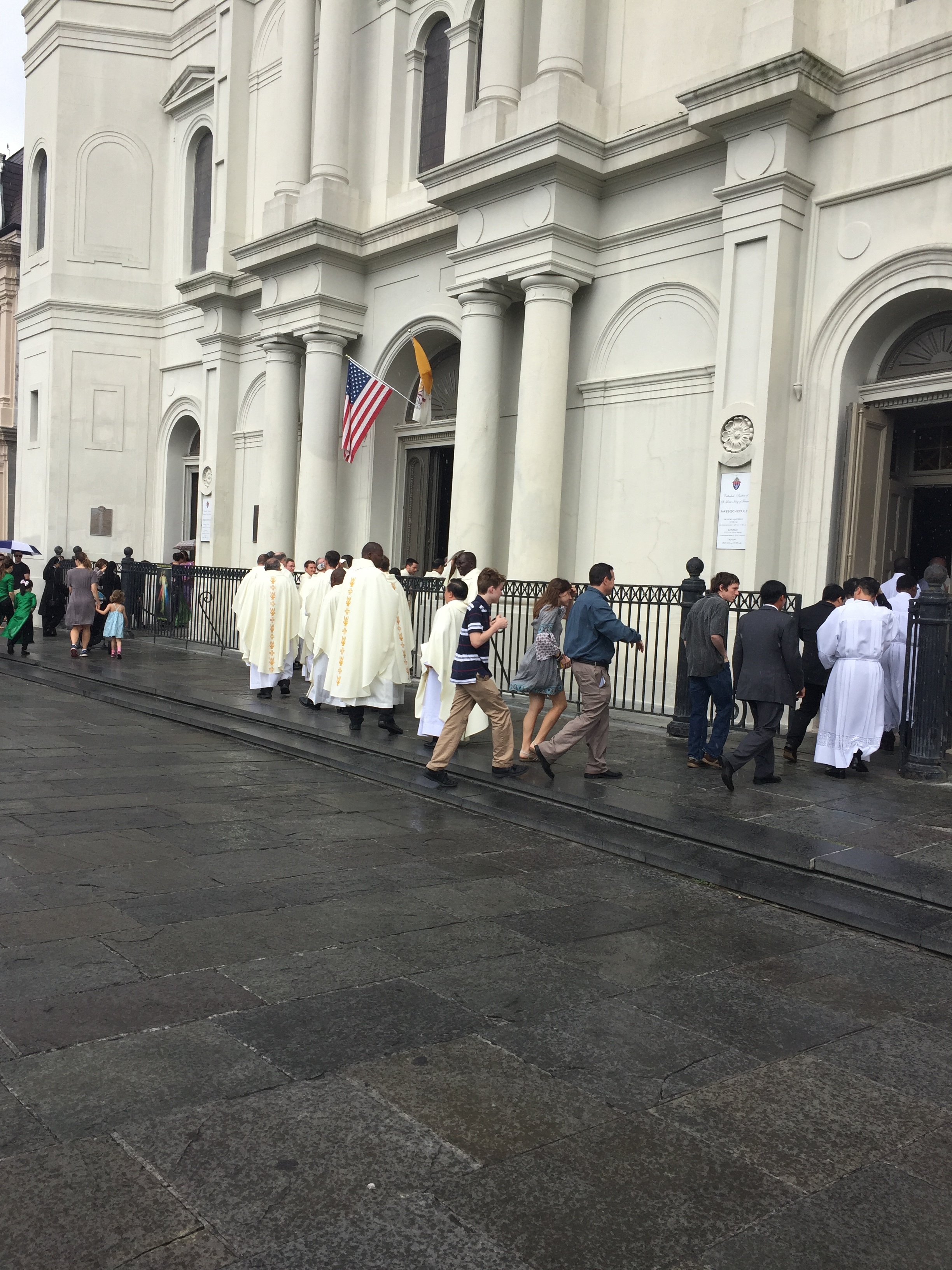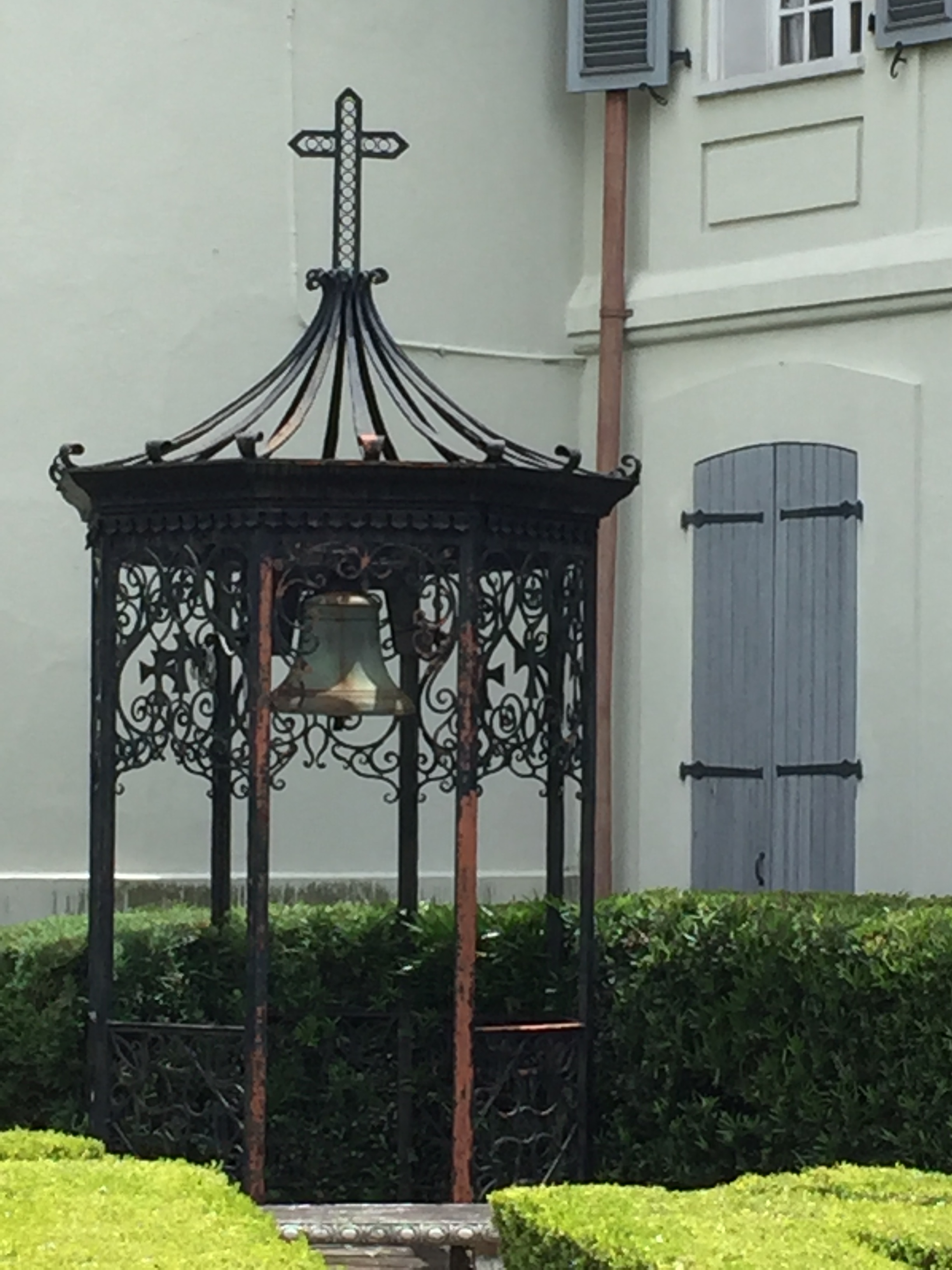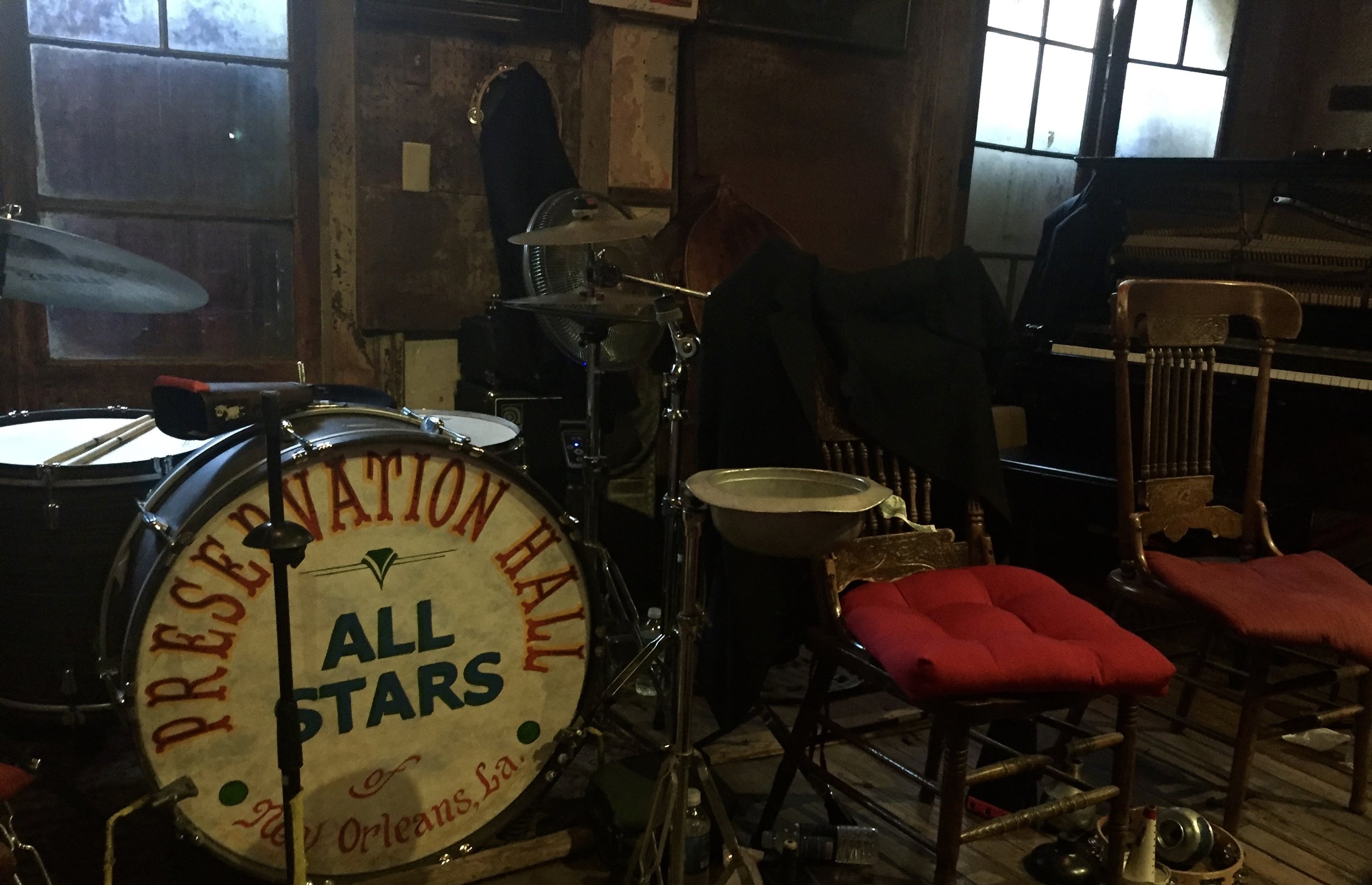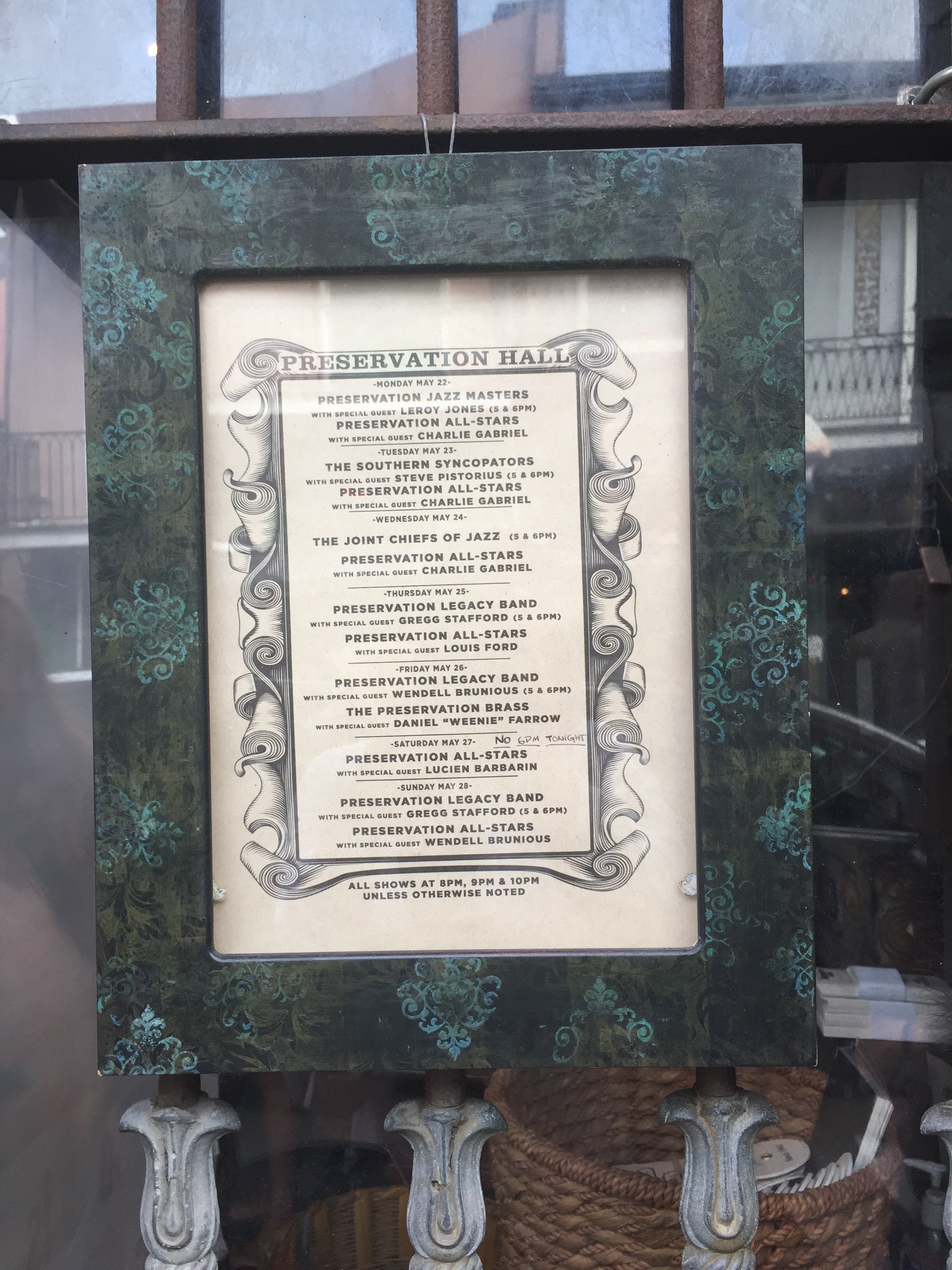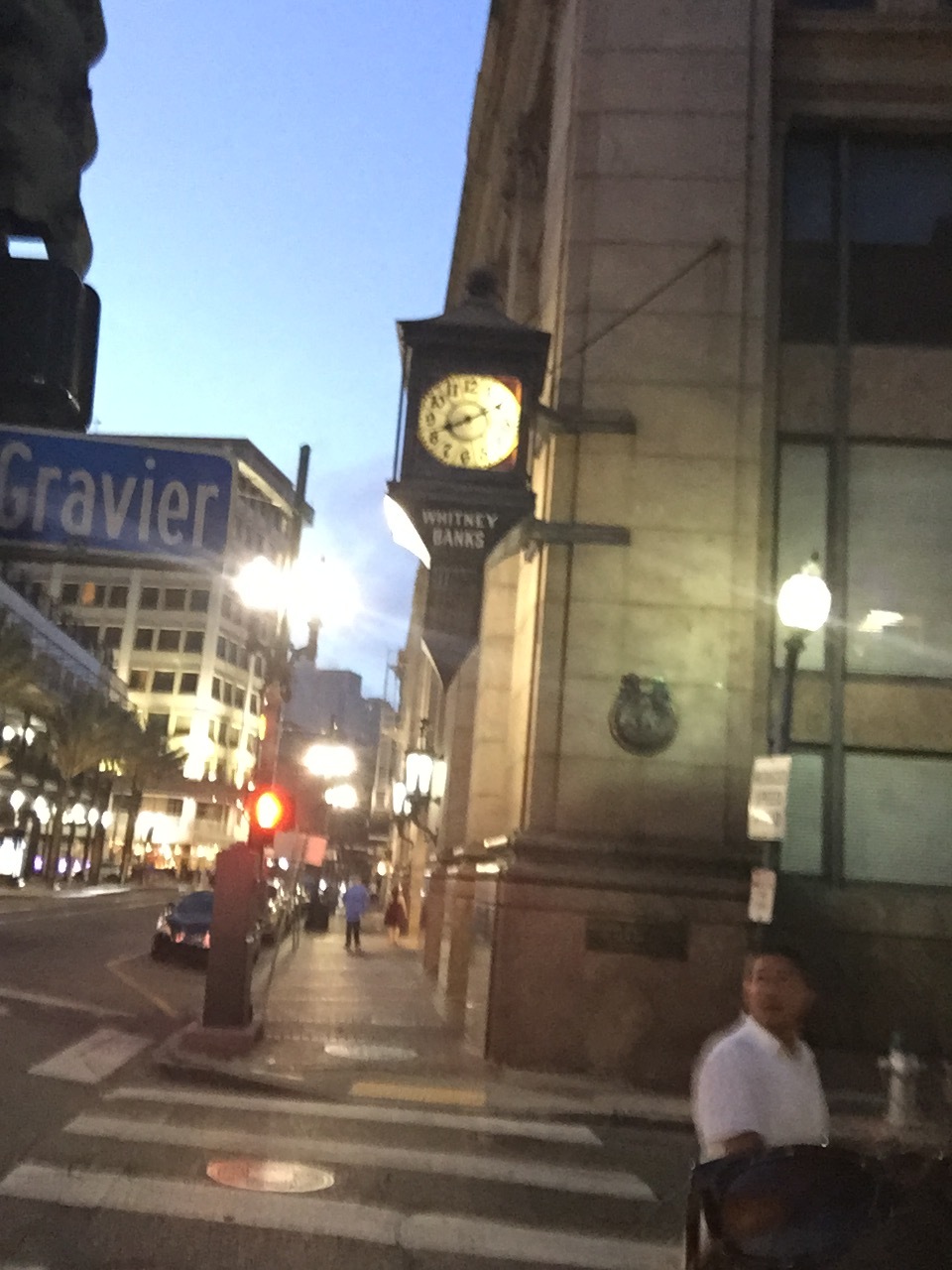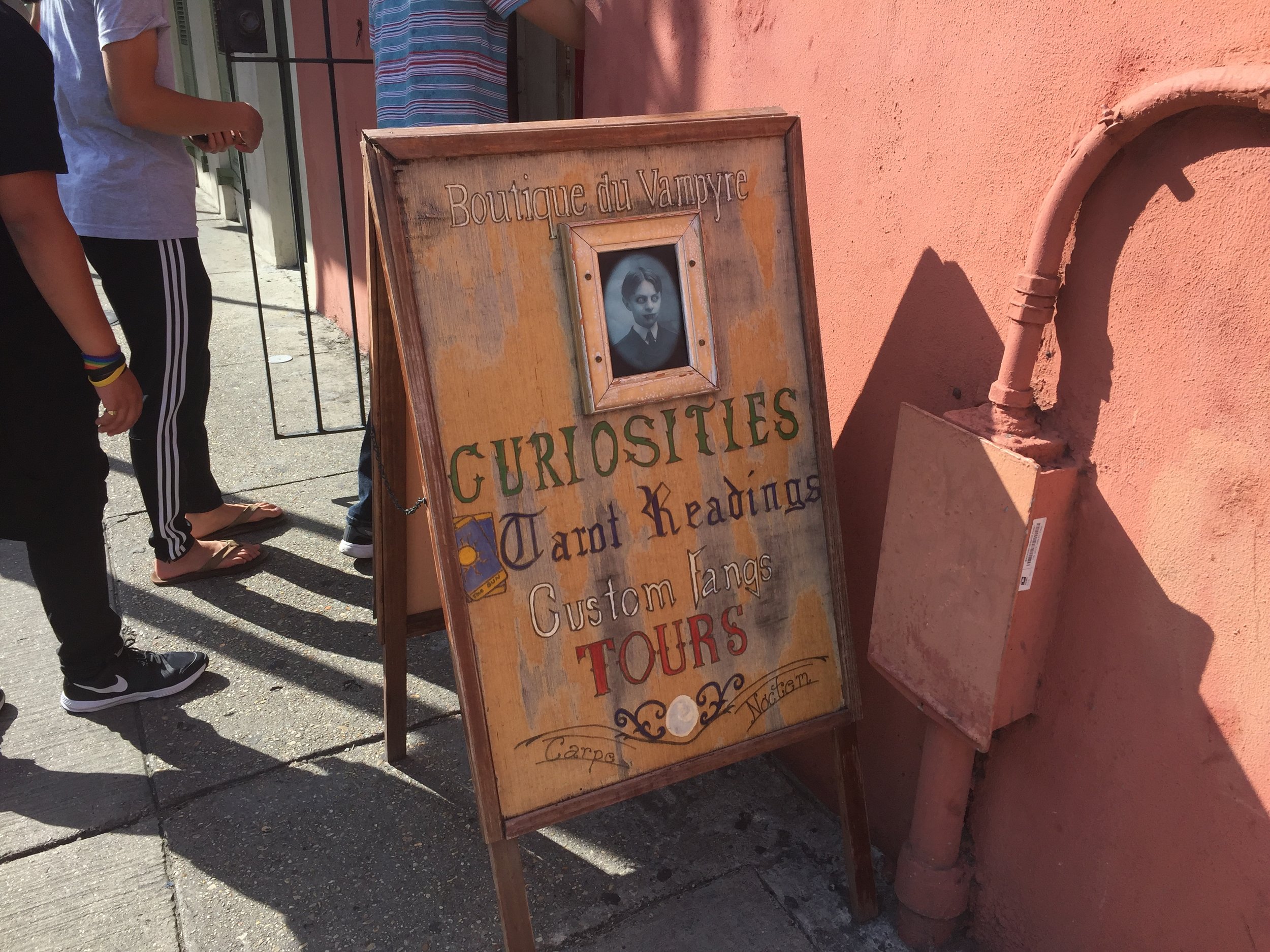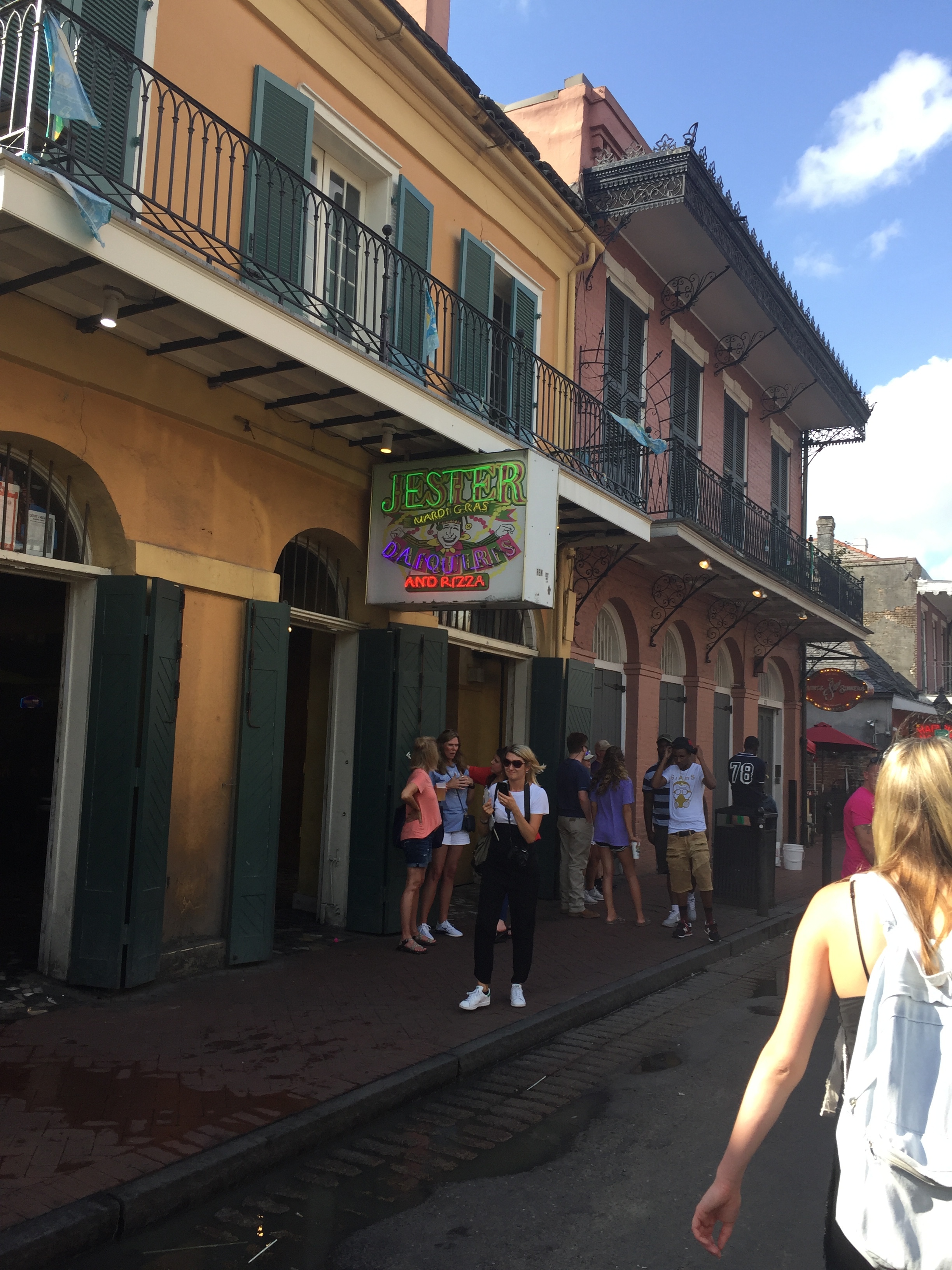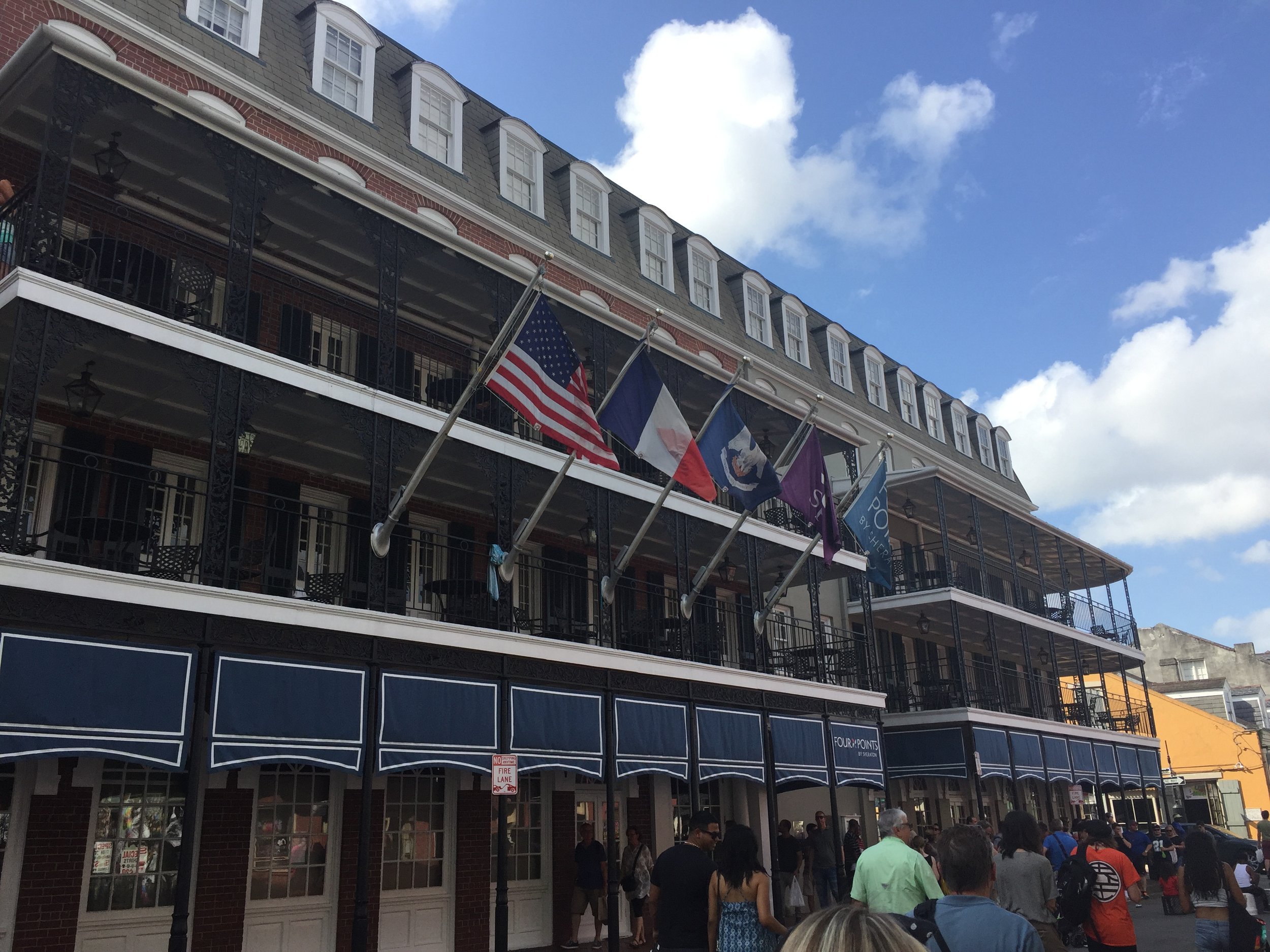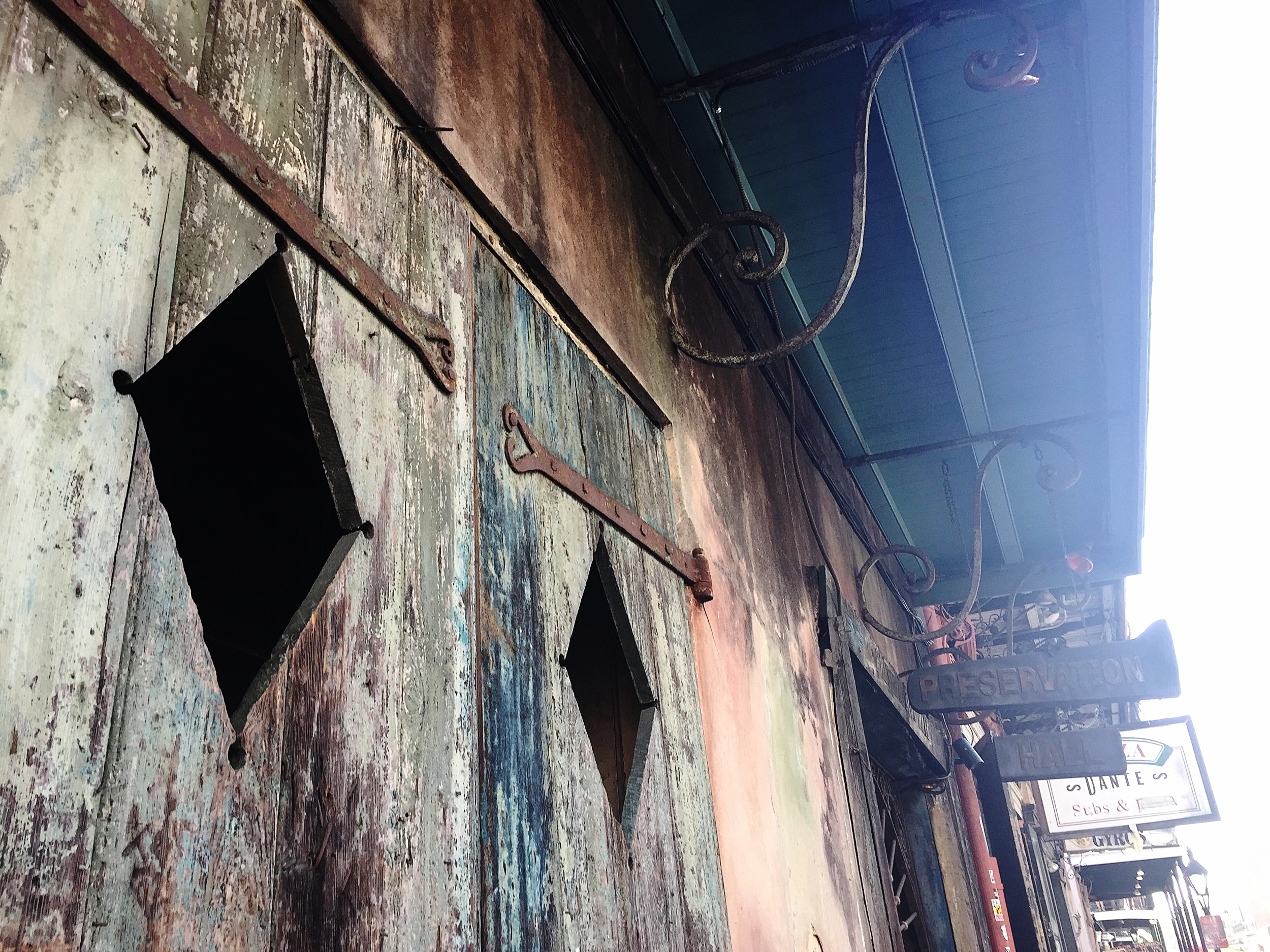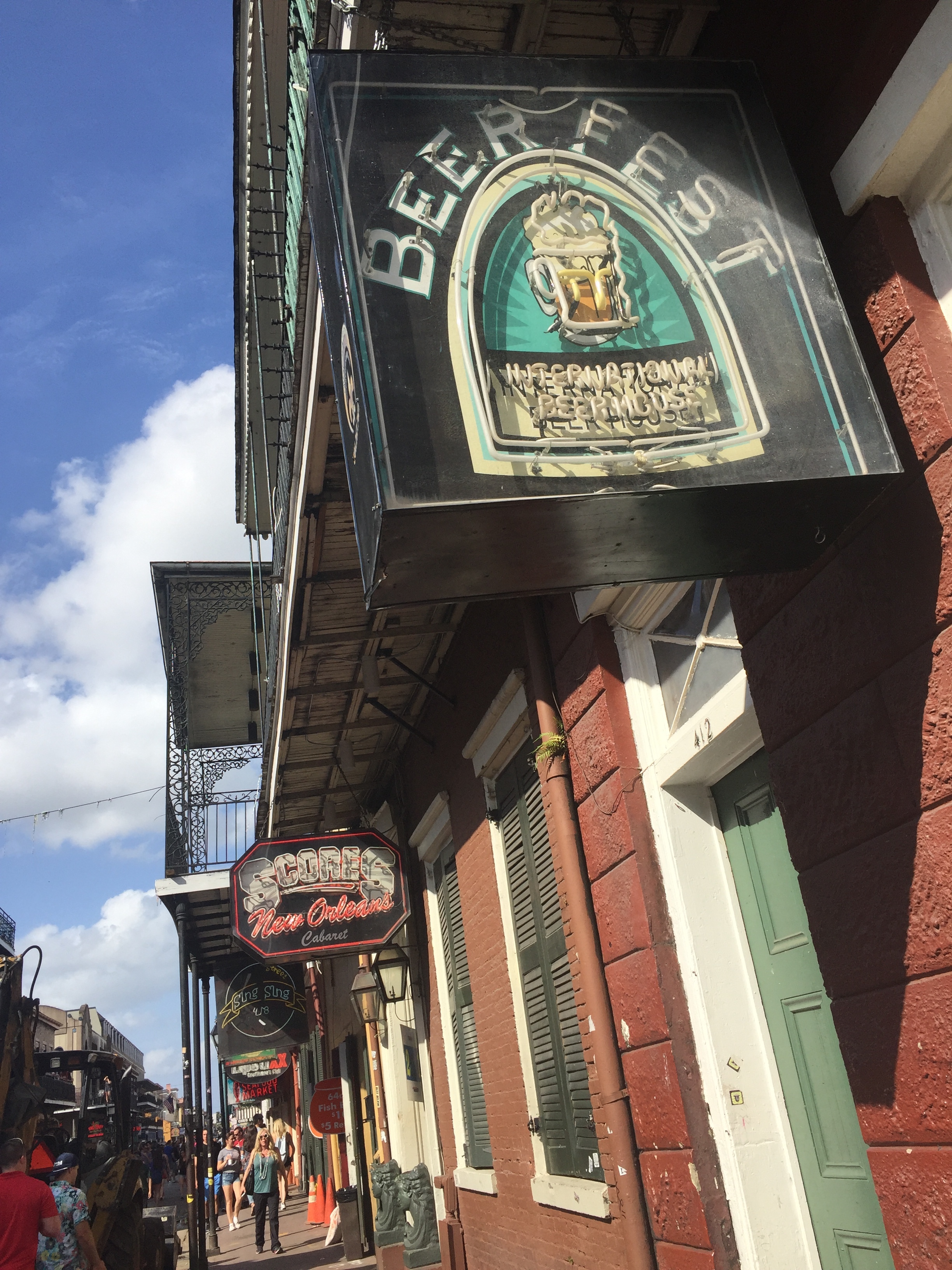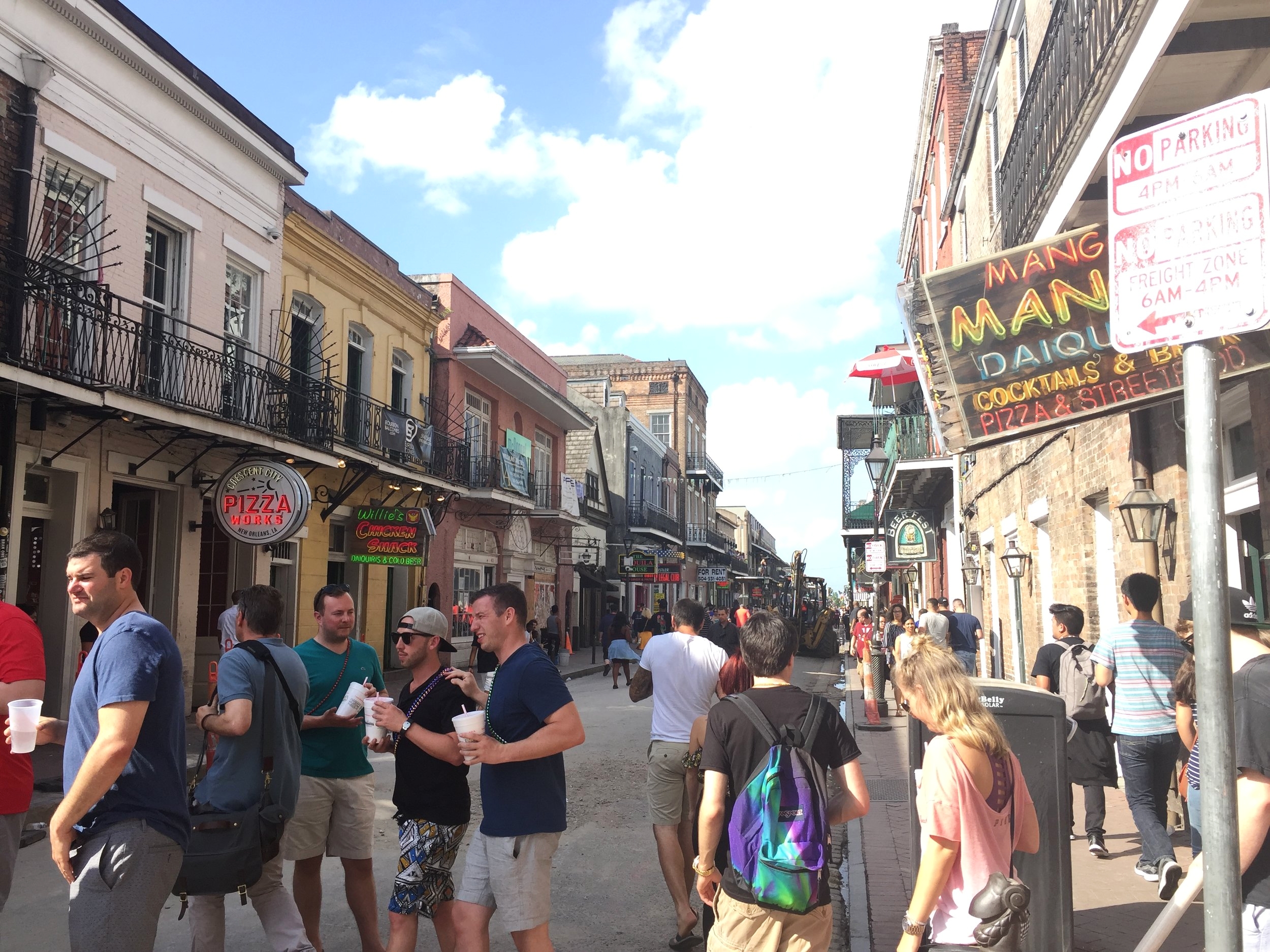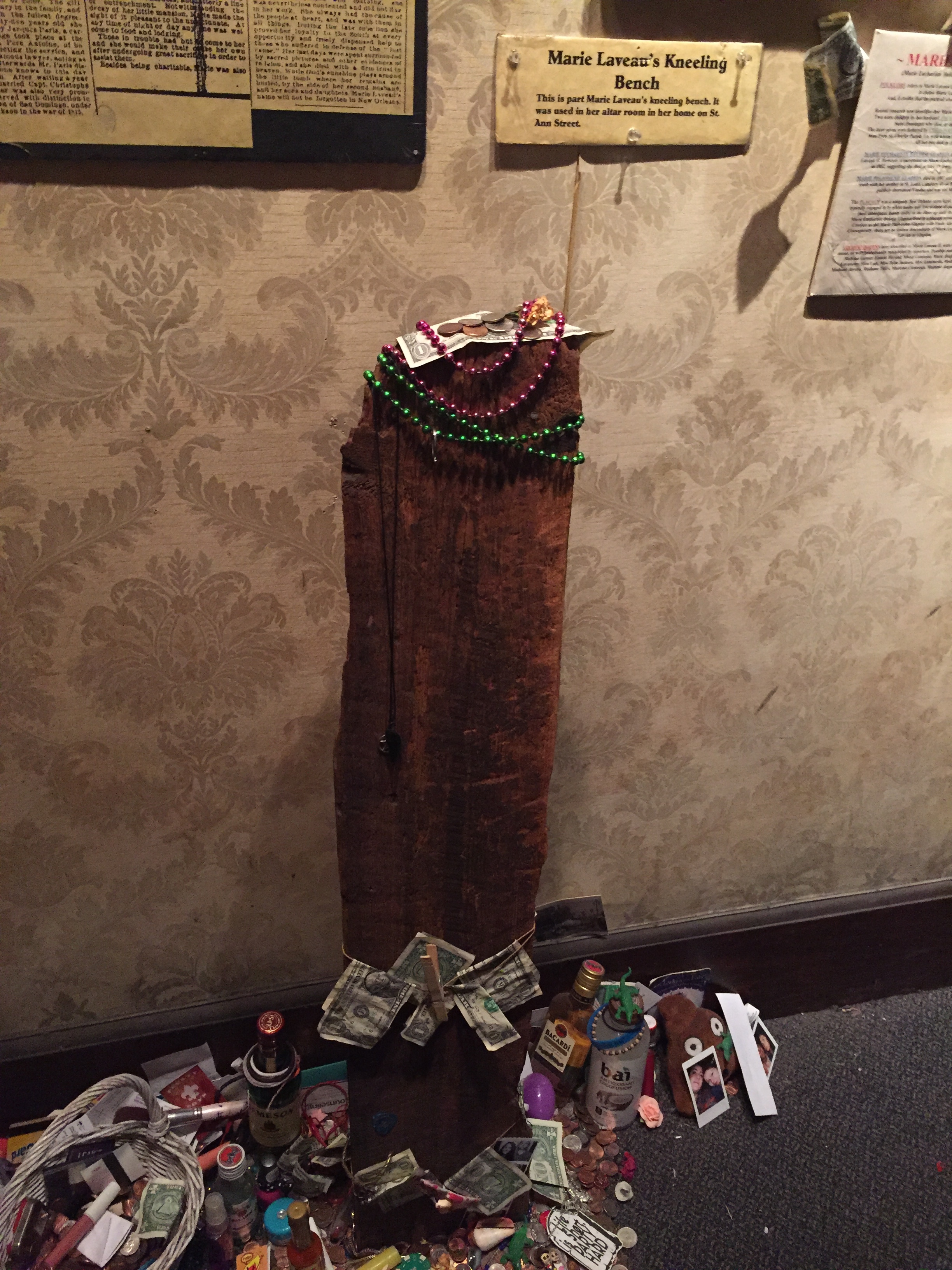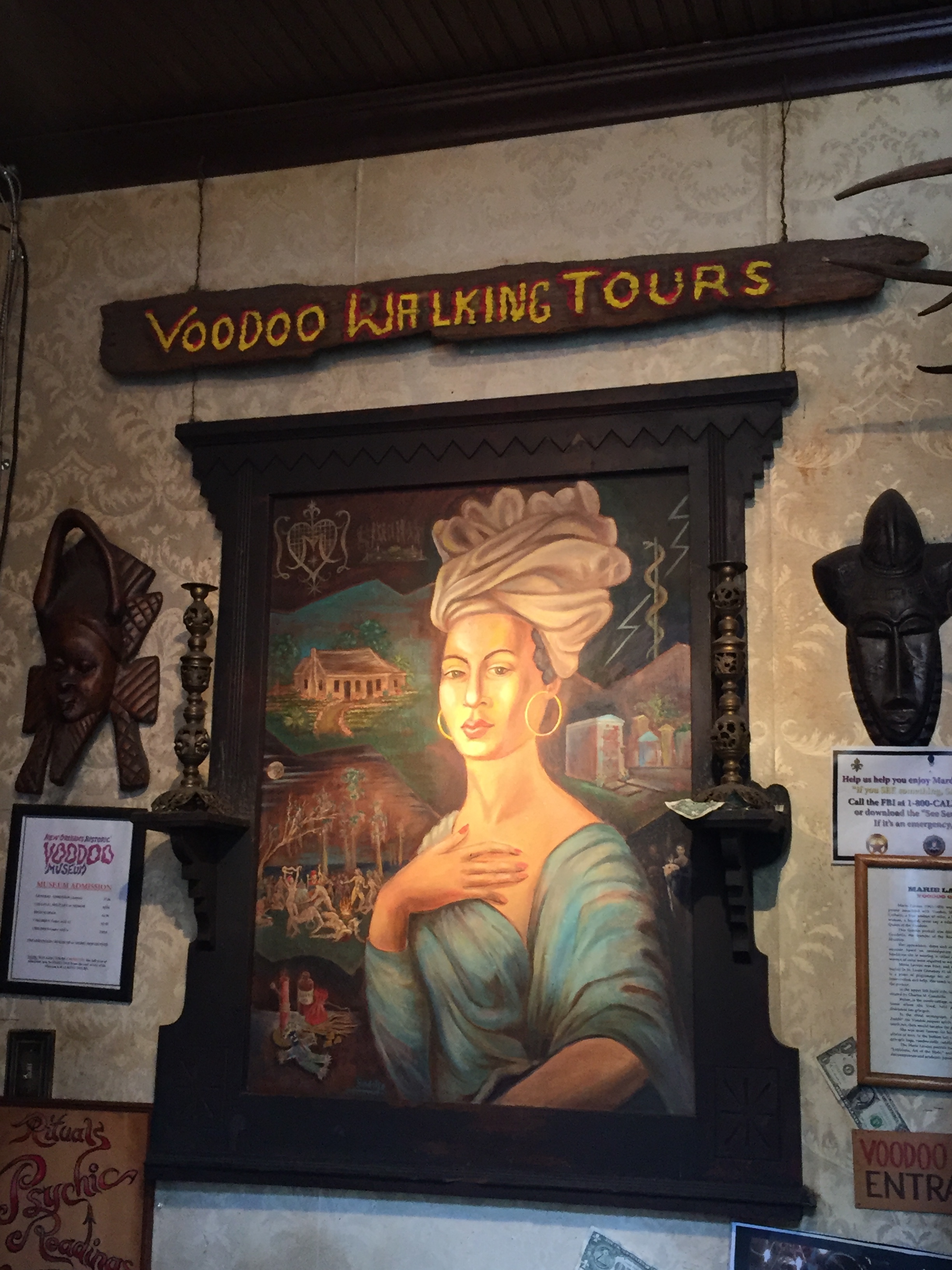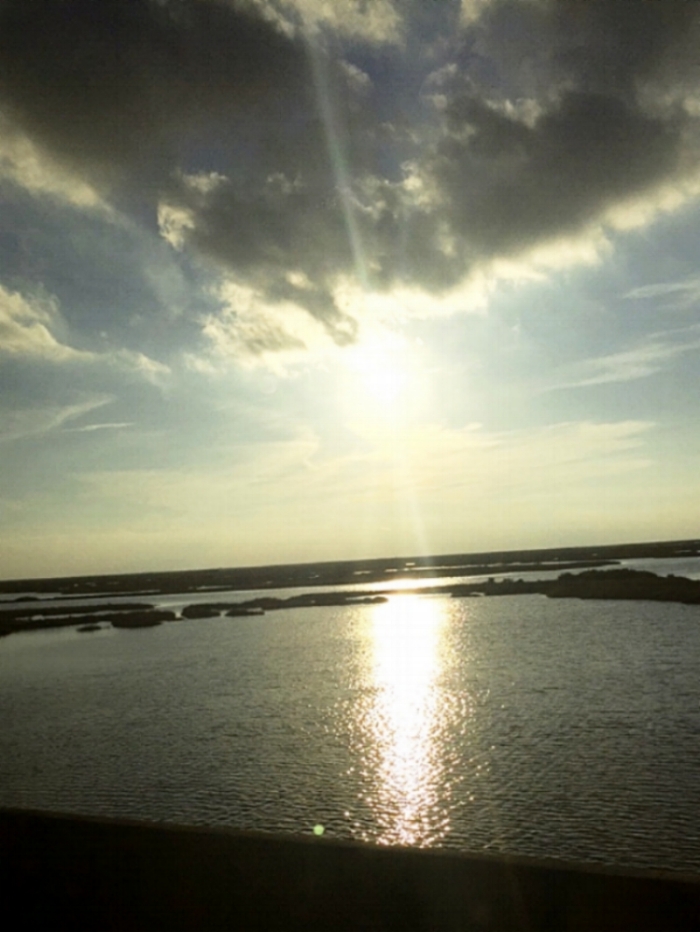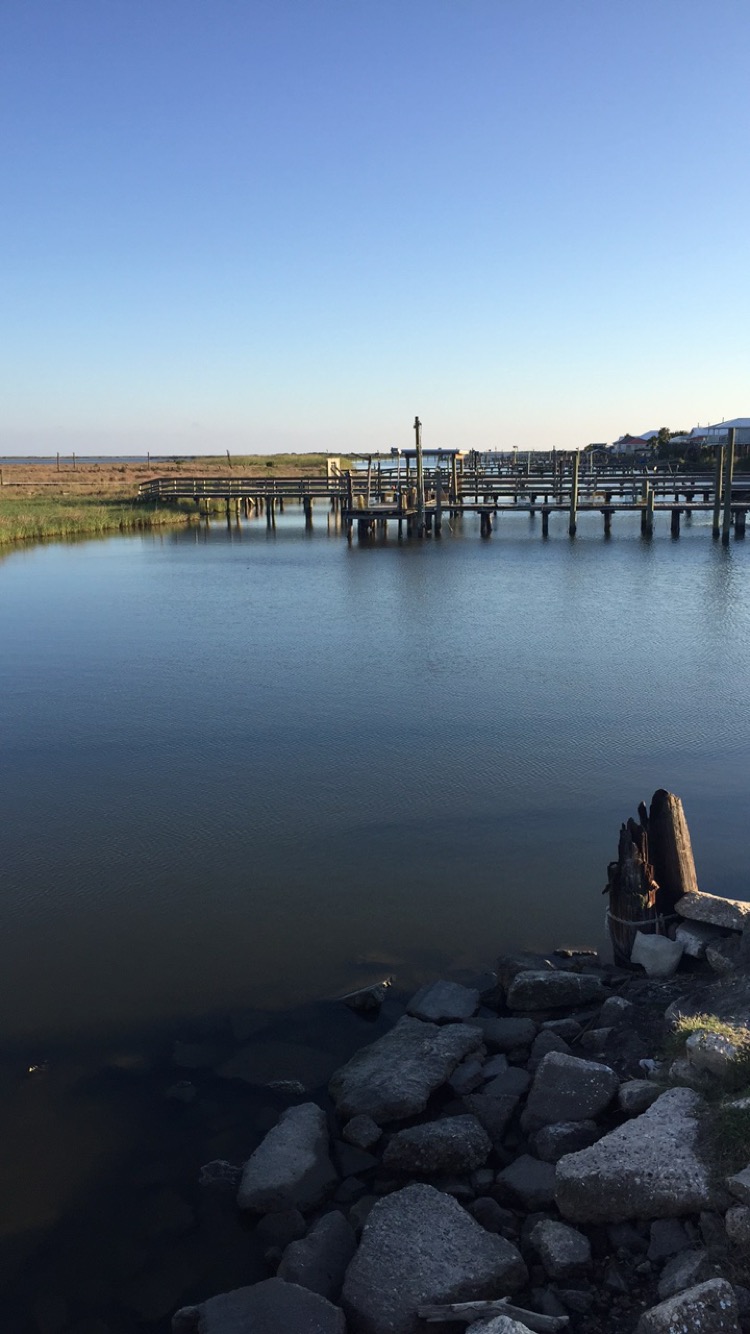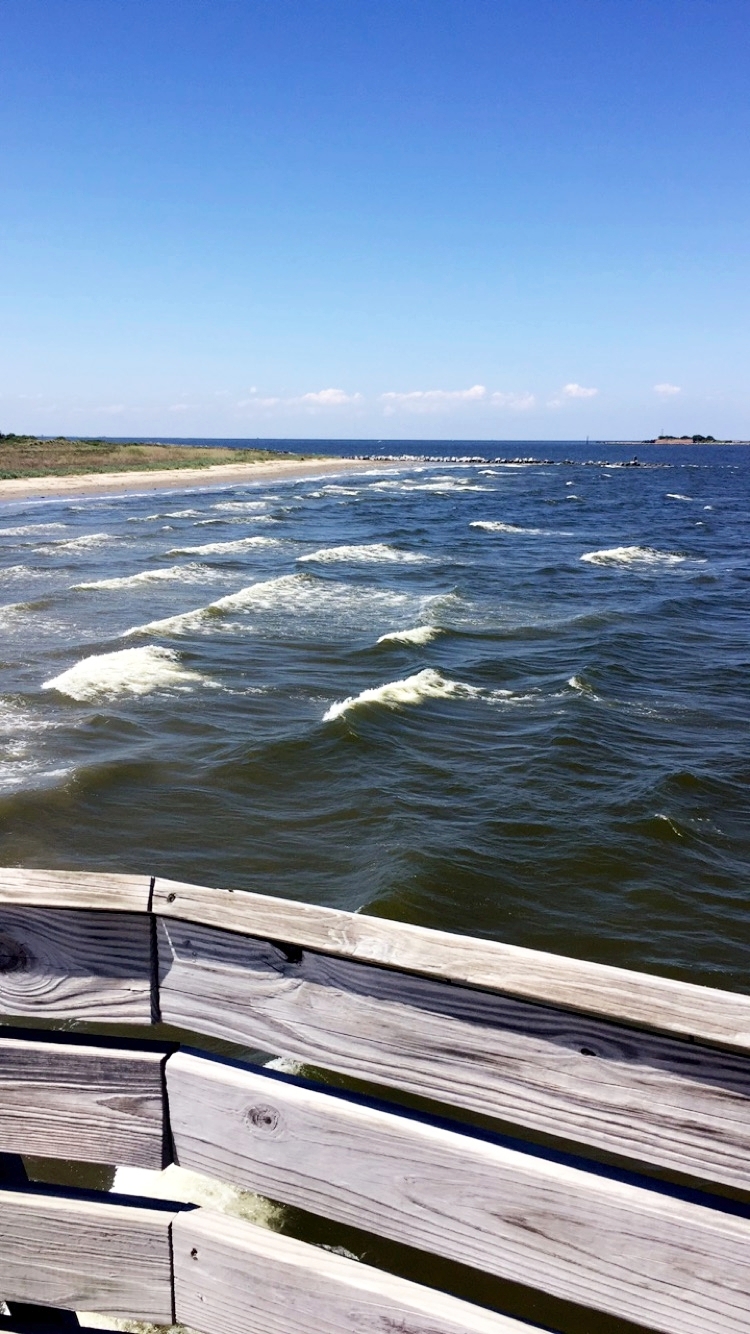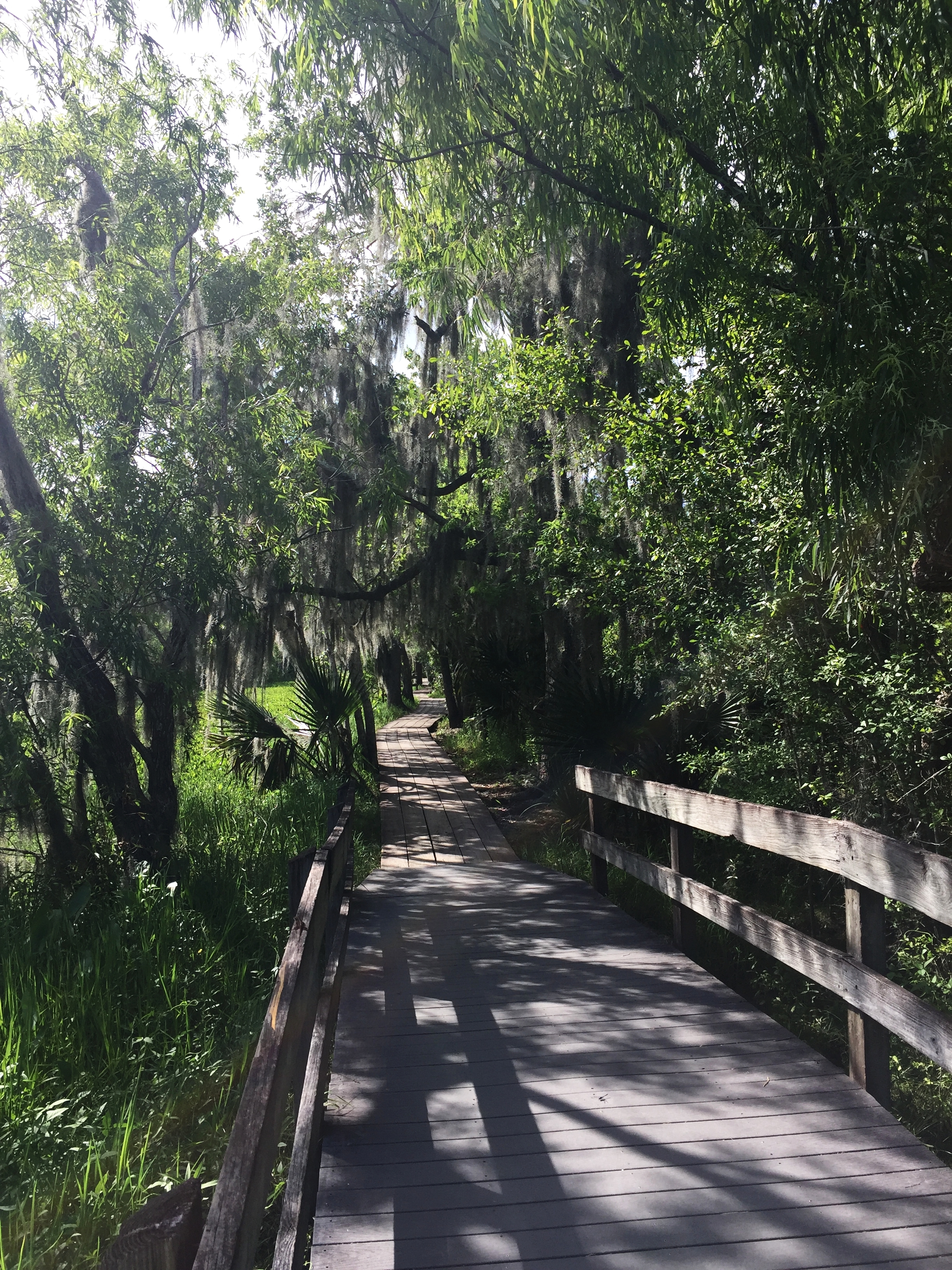What I was expecting
After around eight years years of French classes, I have learned a good deal about Louisiana’s French history. We focused on the Arcadians, so my knowledge of Louisiana history is very specific. However, I wanted learn more and refresh that which I have already learned. I had always wanted to visit Louisiana, and though I had never had the chance, my parents told me wonderful things about New Orleans when I was young.
I had never heard of the term “bookpacking” before my advisor suggested this course to me, but I loved the idea. When I was a Senior in high school, I spent my last months partaking in “Senior Project.” For my project, I wrote a book, or part of one anyway; I wasn’t able to finish as we only had six weeks. I fancied coffee shops for writing most of the time, but I also played around with immersion. I loved writing from places similar to those in which the story took place at that moment. It made it so much easier to lose myself in the story. I wondered if reading a book in the place it was set would have a similar effect.
I was most eager to read Interview With The Vampire, due to a love of the supernatural, but I was excited for every book on the list. I was happy to have never had the chance to read most of these novels. This way I could experience them for the first time fully immersed in the settings in which they take place. I was hopeful that this would be a fun and rewarding experience.
My experience
Grand Isle
The Awakening - Kate Chopin
The Awakening served as my introduction to “bookpacking.” Though I had read it before, and therefore did not have the same experience to speak of as the others, it was still remarkable reading the novella in the place it is set.
I had a different idea of Grand Isle, as well as Louisiana in its entirety, before we drove down to the popular vacation destination. I had never given too much thought to what Louisiana looked like before this trip, though I had learned a bit about its French history in high school. I merely knew that it was heavily covered in marshlands and swamps, and that it had been devastated by Hurricane Katrina a little over ten years prior to our visit. These were not things that I took into mind when first reading Chopin’s novel, and imagining the island where it takes place.
I first read the book to analyze it, not to understand the place or the culture. Therefore why I did not pay as close attention to the setting description and cultural norms. While such mentions seem a prominent part of the character development and understanding of the book now, it was not until I was in the place where the novella is set that I grasped just how much a four-dimensional setting can change someones perspective of two-dimensional piece of art.
When we arrived in Grand Isle I saw very minimal businesses, restaurants, and shops. I expected the island to be bigger, both in land mass as well as in grandeur. I believed the houses would be bigger and more commercial than the locally owned ones that we saw as we drove to our rental. I expected there to be people roaming about on the main road, and out in the ocean, relaxing on the hot sand. Yet, we were met with empty roads, a quiet ocean, and a deserted beach.
When my idea of the place was not met, I became excited about reading Chopin again. I wondered how I could have imagined something so different than the place she was describing. As I read on the beach, and in the rocking chairs in front of the window looking out at the shoreline, I began to realize the description was accurate in so many ways, but I needed to see it for myself to understand what Chopin was attempting to capture. From there I was even more eager to read the novella than before. The characters became more real. Even though we are living in a much different time period, I felt like I could have been in the story.
“‘How many years have I slept?’ she inquired. ‘The whole island seems changed. A new race of beings must have sprung up, leaving only you and me as past relics. How many ages ago did Madame Antoine and Tonie die? And when did our people from Grand Isle disappear from the earth?’”
Not only did the fact that we were in the setting of the piece help, but our location itself aided in this feeling. Grand Isle has this magical aspect of isolation that I’m sure is why people have gone there to vacation for so long. In our rented house, reading and relaxing, and living our lives, we were so far removed from society that it was almost like we had fallen back in time. Grand Isle was such a great way to begin the course and a perfect start to the "bookpacking" experience. We finished reading the book before heading to New Orleans, but the part of the story which takes place in the famous city excited me to read, learn, and experience more.
New Orleans
Interview with the Vampire - Anne Rice
I as said before, I was most excited to read this novel. As one of the more recent works we would read, I did not fear a barrier in dialect or custom. I was a bit mistaken. The story begins present day, only to flashback to the late 18th century as Louis tells his story, which then goes on to span a great deal of time and cultures to end in present day where the interview is taking place.
It proved much more difficult to immerse myself in this narrative. There were many reasons for this. The first being the aforementioned time and cultural difference. I found it much simpler to imagine Edna and late 19th century Grand Isle because of the isolation of the island. It was easier to lose myself in The Awakening and imagine the place and characters as they were in that time because I was surrounded by an unpopulated vacation town. There I could see what I wanted and needed without interference, whereas in New Orleans my imagination was hindered by the heavy tourism of the city. It also helped that The Awakening is more rooted in reality than Interview with the Vampire.
It is funny that what I most anticipated about Rice’s famous novel is what impeded my immersion the most. I was excited for the supernatural story that Louisiana is such a perfect setting for. The vampire fiction was both extremely enticing, and at the same time annoying.
I loved reading the book, and I especially liked how Louisiana is an ideal place to set a supernatural fiction, specifically New Orleans, and especially vampire literature. Wandering around the city and seeing the places described in the novel as they are today was extremely gratifying. I do not think that any of the other books we read gave me more reference of important places in New Orleans than Interview with the Vampire. However, while I found it helping in exploring the city, I did not find it was as helpful as the other novels in exploring the culture. That is not to say that it was not helpful in understanding the culture at all.
There was one aspect of Louisiana culture that Anne Rice hit on the button more than any of the other authors: “french-ness.” In a place where being a Creole could be equated to having been of noble birth, this is a very important aspect of the culture. Themes of “french-ness” in this book include: sensuality, sexuality, relaxation, (over)indulgence, lavish lifestyle, and parading wealth. These themes still endure in various amounts, both in Louisiana culture and in French culture, though they were definitely more prominent a few centuries ago.
One other aspect of Louisiana culture that the other books did not touch upon is the Voodoo religion. Not much is said about Voodoo in Interview with the Vampire, but Louis recognizes that his slaves were the first to notice his change and possibility of his supernatural nature. This would be due to their knowledge of spirits and demons through the religion of Voodoo. While Voodoo is not explicitly detailed in any of the books, we had the opportunity to visit the New Orleans Historic Voodoo Museum. There we learned of the Voodoo queen, Marie Laveau, who’s grave we later visited in St. Louis Cemetery 1.
“I did not realize at the time that these slaves would be the first, and possibly the only ones, to ever suspect that Lestat and I were not ordinary creatures. I failed to realize that their experience with the supernatural was far greater than that of white men. In my own inexperience I still thought of them as childlike savages barely domesticated by slavery. I made a bad mistake.”
The Moviegoer - Walker Percy
I found it difficult to immerse myself in this book due to my lack of enjoyment and the cynical and pessimistic musings of the main character, Binx Bolling. This novel was by far the least favorable of the lot, in my opinion, which is likely why I struggled in using the novel to explore the culture and terrain of New Orleans. However, even though I was not the biggest fan of this novel, I do believe it helped me to understand New Orleans better than I had previously. This appreciation was gained after finishing the novel and seeing those places that Binx had described.
Binx’s Aunt Emily lives in the Garden District, a place which he was determined to distance himself from. This is evident in everything that he does, though his roundabout way of traveling to his Aunt Emily’s in the beginning of the book, is a good example of the lengths he is willing to go to achieve this distance. The differences between Binx and his Aunt’s personalities and priorities parallel the differences in their respective neighborhoods. This connection allowed me to put a story to the places I was visiting, which in turn made the experience that much more enticing and intimate. Through the characters residing in each section of the city, I felt I was able to see the personalities of both of the neighborhoods.
The Garden District is the section of New Orleans where the wealthy reside, specifically those of high class and old money. Binx describes the Garden District as having a “genteel charm.” In one instance where he is traveling on Elysian Fields Avenue towards the Garden District from his home in Gentilly and seeing swimming pools and manicured lawns, he knows that he is getting closer by the increasing wealth displayed in the homes. Though we travelled to the Garden District by way of the St. Charles Streetcar from the business district, I was still able to see for myself the difference of the homes in the Garden District to others seen along the way. I understood the just of it; that one can tell that they have arrived as soon as they have entered the Garden District. Fortunately we had the opportunity to explore over there on numerous occasions. I don't remember seeing any swimming pools, but I can attest that the houses are truly stunning.
“For the past four years now I have been living uneventfully in Gentilly, a middle-class suburb of New Orleans. Except for the banana plants in the patios and the curlicues of iron on the Walgreen drugstore one would never guess it was part of New Orleans. Most of the houses are either old-style California bungalows or new-style Daytona cottages. But this is what I like about it.”
Binx describes Gentilly as a middle-class suburb of New Orleans, and that, save from a few details of the place, one would never know it was a part of New Orleans. He describes life there as being peaceful, and I cannot say from what I have seen that that is not true. I liked seeing this place in which Binx Bolling lived his life. Fiction, I know, but still interesting. It was also interesting to visit Lake Pontchartrain which is mentioned a few times in the book. The northern parts of New Orleans were not really mentioned in the other novels, so it was nice to have this book to reference in that aspect.
A Confederacy of Dunces - John Kennedy Toole
Because we read A Confederacy of Dunces before arriving in New Orleans, the bookpacking experience varied. Like with The Awakening, I had a different idea of New Orleans than what I ended up experiencing, though unlike The Awakening, I did not have the pleasure of reading the book again in the place it was set.
I was expecting much more of Bourbon Street than I saw, though I can’t complain seeing as I only visited during daylight. If there is one thing I especially want to see if I return to New Orleans, it would be Bourbon Street at night. Canal Street turned out to be bustling, and very touristy, so it was easy for me to imagine Ignatius strolling along. We even went to the statue of him in front of what was the D.H Holmes Department store, and what is now the Hyatt French Quarter Hotel. The statue was sculpted with the opening scene of the novel in mind. At this point I could definitely see Ignatius on Canal St.
“A green hunting cap squeezed the top of the fleshy balloon of a head. The green earflaps, full of large ears and uncut hair and the fine bristles that grew in the ears themselves, stuck out on either side like turn signals indicating two directions at once. Full, pursed lips protruded beneath the bushy black moustache and, at their corners, sank into little folds filled with disapproval and potato chip crumbs. In the shadow under the green visor of the cap Ignatius J. Reilly’s supercilious blue and yellow eyes looked down upon the other people waiting under the clock at the D. H. Holmes department store, studying the crowd of people for signs of bad taste in dress.”
For the most part what I gained from A Confederacy of Dunces was just a hilarious read, but it was also interesting in regards to the dialect. The speech was something that I was not accustomed to when we arrived. I was expecting deep south accents and great manners, not much more, when I was accepted to the course and thought about Louisiana. Then again I hadn’t had much experience with southern dialects before. I had only been to Florida and Georgia prior to this, and I am not quite sure that Florida would be considered southern by way of culture and speech.
Though I think that Toole exaggerated, as he did with everything in this novel, it was nice to have some heads up at the difference in speech before we arrived. For the most part I met people who had accents, but whose speech otherwise was similar to that which I was used to. There were some people who did speak like Toole’s characters in A Confederacy of Dunces, and it was jarring at first, both in the book and in reality, but over time it became just another Louisiana quirk to me.
Baton Rouge
A Lesson Before Dying - Ernest J. Gaines
One of the best, if not the best, and most rememberable experiences I had on this trip was meeting Ernest J. Gaines himself. The man is a living legend, and to be in his presence, talking about his most famous work, was nothing short of amazing. His wife and daughter showed us around their property including the church that Ernest was schooled in during his childhood, and which they are now restoring. While we gathered around the table to talk to Ernest, Mrs. Gaines brought us lemonade and cookies. Such a kind gesture was much appreciated, especially because they had already been so kind as to indulge our visit. A true measure of Southern hospitality. I found myself so nervous sitting next to Mr. Gaines at the table as we discussed his work. I knew instinctively that this man was wise beyond my years, possibly wiser than I will ever be. Definitely the highlight of this trip.
The most interesting part about bookpacking with A Lesson Before Dying, besides discussing the book with Ernest J. Gaines himself, was visiting the prison and courthouse where Jefferson’s trial and incarceration were set. What was especially fascinating was when the staff at the police station accompanied us to the old prison cells. The retired cells, which are not open to the public, are on the top level of the building. There is a set of stairs that Gaines writes about from Jefferson’s perspective. While we counted and the number was off, the sentiment was there. We ended up taking the creaky. small, old elevator up the one floor to the cells. There the women told us the history and layout of the prison cells, which the use of was discontinued in the 80s if I am remembering correctly. Weaving in and around the different rooms, seeing the bunks, the toilets, the one solitary cell, I felt I had a more real vision of Jefferson.
Talking to Gaines prior to visiting the prison he told us he was inspired by the real story if Willie Francis. After learning this, the story became more rooted in reality, and the effects of reading it hit harder than before.
CaJun country
“Floyd’s Girl” - Tim Gautreaux
This short tale based in Cajun country was the epitome of what "bookpacking" should be. I read the story sitting on my bunk in our rented house in Lafayette after visiting Tom’s Fiddle and Bow. The characters in the story seemed so real, like I had just met the lot of them earlier that day. Tim Gautreaux wrote from each character’s perspective, and that made it even more interesting to read. I felt I shared Floyd’s determination to get his daughter back, and that I was rooting him on from the sidelines, willing to help out like his neighbors. Community is well depicted here. Everyone knows the other.
“Floyd drank beer and made noise with his friends on weekends, spent his extra money on his daughter, her clothes, her Catholic school, her music lessons. Everyone in the community of Grand Crapaud knew he had good sense and would do a thing as soon as it needed doing. They knew this because he never hit a man when he was down, the grass in his yard stayed cut, he washed his car, and there were no holes in the screens of his house.”
Floyd mentions music, which we had spent most of our day preceding my reading this story listening to. Music is an important aspect of culture, as I was constantly reminded during my stay in Louisiana. Religion is a priority. Floyd spends most of his money on his daughter’s clothes, schooling, and cultural education. He also references his ex-wife as a "LeBlanc gone mad," noting that she stays out all night, drinks beer, smokes dope, and has given up French music and rock and rock for country. Though I don't necessarily agree on that last one, I find it interesting that that is how Floyd chose to describe that his ex-wife had "gone bad": a change in music taste.
The description of the setting fit with what I could see out my window each time we ventured out of our rental. But that was just the setting, the real magic of "bookpacking" with this story was the parallels that I could see between the characters and the people I had met previous to reading it.
Final thoughts
Though I believe Anne Rice captured the “french-ness” of New Orleans in all of its grandeur, I also think that most of the books have those cultural French aspects in them, especially those set in New Orleans. Sexuality and leisure play a big part in The Awakening as well as The Moviegoer. Ostentatious behavior and nightlife are prominent in A Confederacy of Dunces. Finally, wealth, and the politics that accompany that wealth, is a big theme in All the King’s Men. The use of French language in Floyd’s Girl. French aspects in these books are not limited to what I have listed, and I could go on, but those are the aspects of the books that most stood out to me.
You may have noticed from my poems about the different music I encountered on our trips and in each text, that music has been a focal point of my experience traveling Louisiana. What I have most noticed in every book is how art culture, not only music, plays an important part in each narrative of at least one character. From Mademoiselle Riesz's piano and Edna's painting, to Binx and his moviegoing, even Jefferson's writing. In some form or another, art has a way of not only telling a story, but allowing a story to progress, and further pushing it forwards, when it is included in a narrative.
Read the edge of the bottom roof: "I'm not sure but I'm almost positive that all music came from New Orleans"
I love the idea of ‘bookpacking,” and when it works, it works. It is a hard idea to peg down because you have to have the right book to be able to immerse yourself in the culture. An enjoyable book that is rooted in reality, rich with the culture of the place and in descriptions of the places where it is set. It is hard to remember that you are reading to enhance your view of the place and its culture, not just for the enjoyment of the book.
Especially with this course, I found it difficult to not analyze each novel as I read, like I would in a general English course. I had to remind myself that this was not a typical English course like those I had taken, but a mixture of English, History, Sociology, Journalism, and maybe even a few more. I definitely think that I gained much knowledge of Louisiana culture from our visit and the books we read that I would have otherwise not had I merely been vacationing in New Orleans for the same amount of time. I will definitely continue to employ "bookpacking" during future trips, though likely not on the same scale. I hope by reading my blog you will have been inspired to do the same.
















